
Photo by PDPics from Pixabay
Glossary on Festivals and Youth Work
One Language is One Person, Two Languages Two Persons. An old Turkish proverb underlines the importance of speaking more than your own language in order to reach more people and interact. Well, it is not called Festivalisch or NGOnto, but each sector comes with its own jargon, abbreviations and acronyms. It would be best not to assume everybody speaks and understands the words you use in the same manner.
If you are going to create a project together, it would be best to understand each other. In youth work, education comes in formal, non-formal and informal forms, and in festivals barters actually work. If a festival organizer asks the NGO representative, how many hands will you use? Or whether the cooperation deal will include sanctions for scalpers, this glossary is what you need.
We prepared a list of terms that are likely to pop up during your cooperation. Best to review and make sure you speak about the same thing when you speak.
If you are going to create a project together, it would be best to understand each other. In youth work, education comes in formal, non-formal and informal forms, and in festivals barters actually work. If a festival organizer asks the NGO representative, how many hands will you use? Or whether the cooperation deal will include sanctions for scalpers, this glossary is what you need.
We prepared a list of terms that are likely to pop up during your cooperation. Best to review and make sure you speak about the same thing when you speak.
AAA, AA
“Access all areas.” People with an AAA pass can enter all zones at a festival. “AA” (“all areas”) usually means the same as “AAA”.
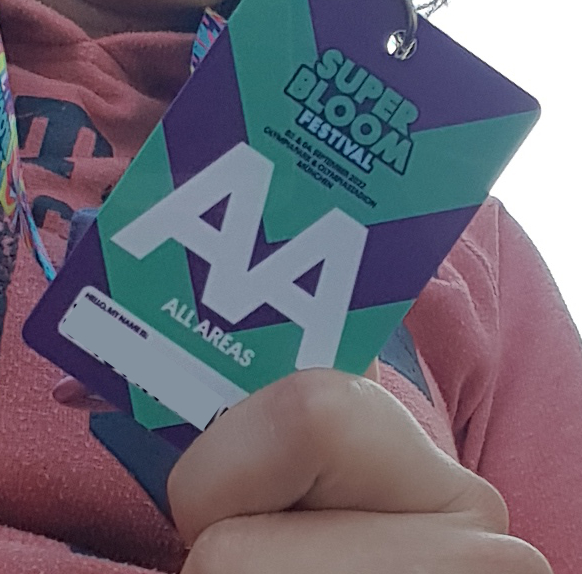
Photo by Judith Kaiser
Accessible/ADA
Specific seating or areas designated for people with disabilities limiting their mobility.
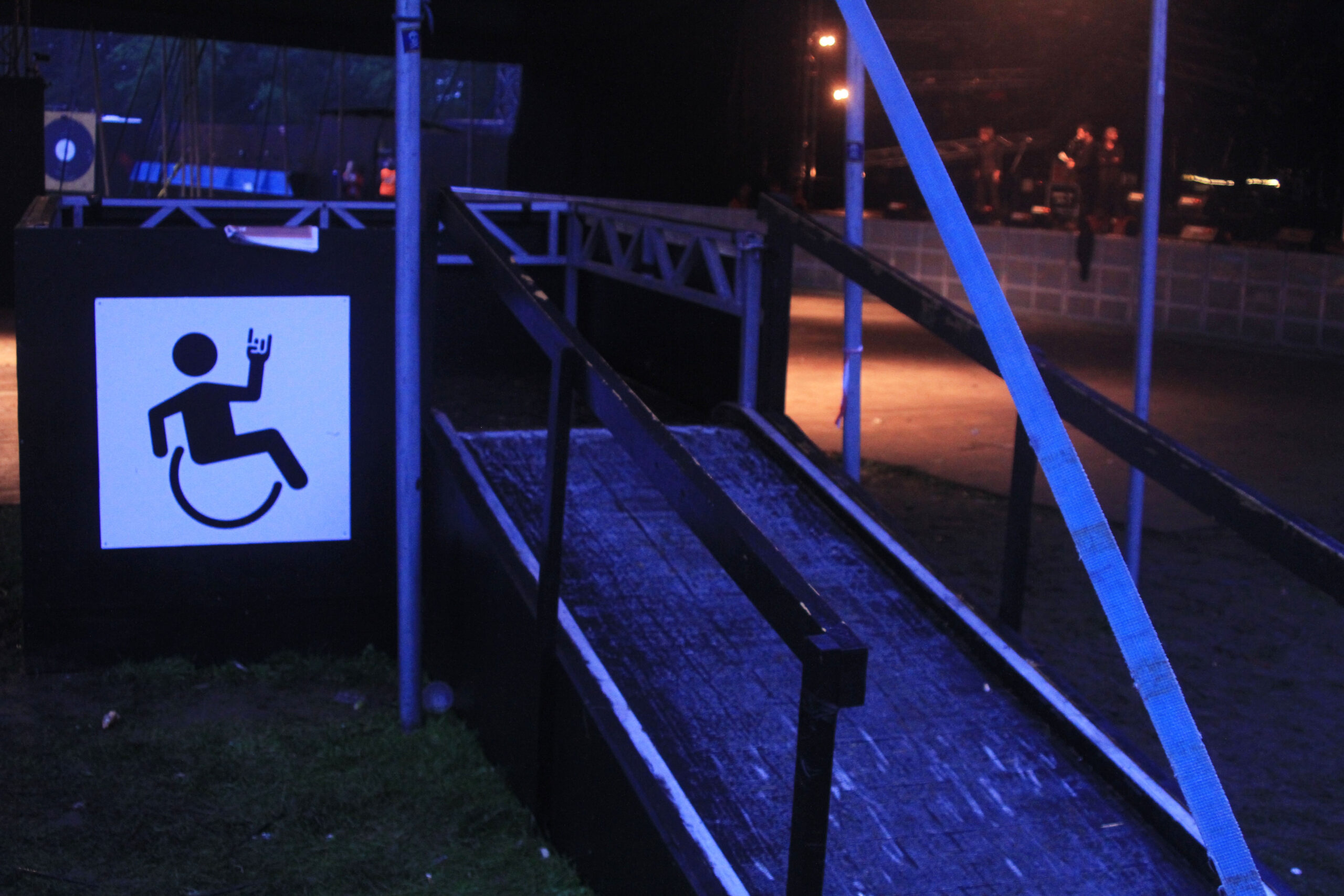
Photo by Egill Egillson
Backstage
The area of the festival for crew and artists behind the stages that is inaccessible to the public. Backstage might also describe an extra zone somewhere not close to a stage that is only accessible for a specific group of people (crew, VIPs etc.).
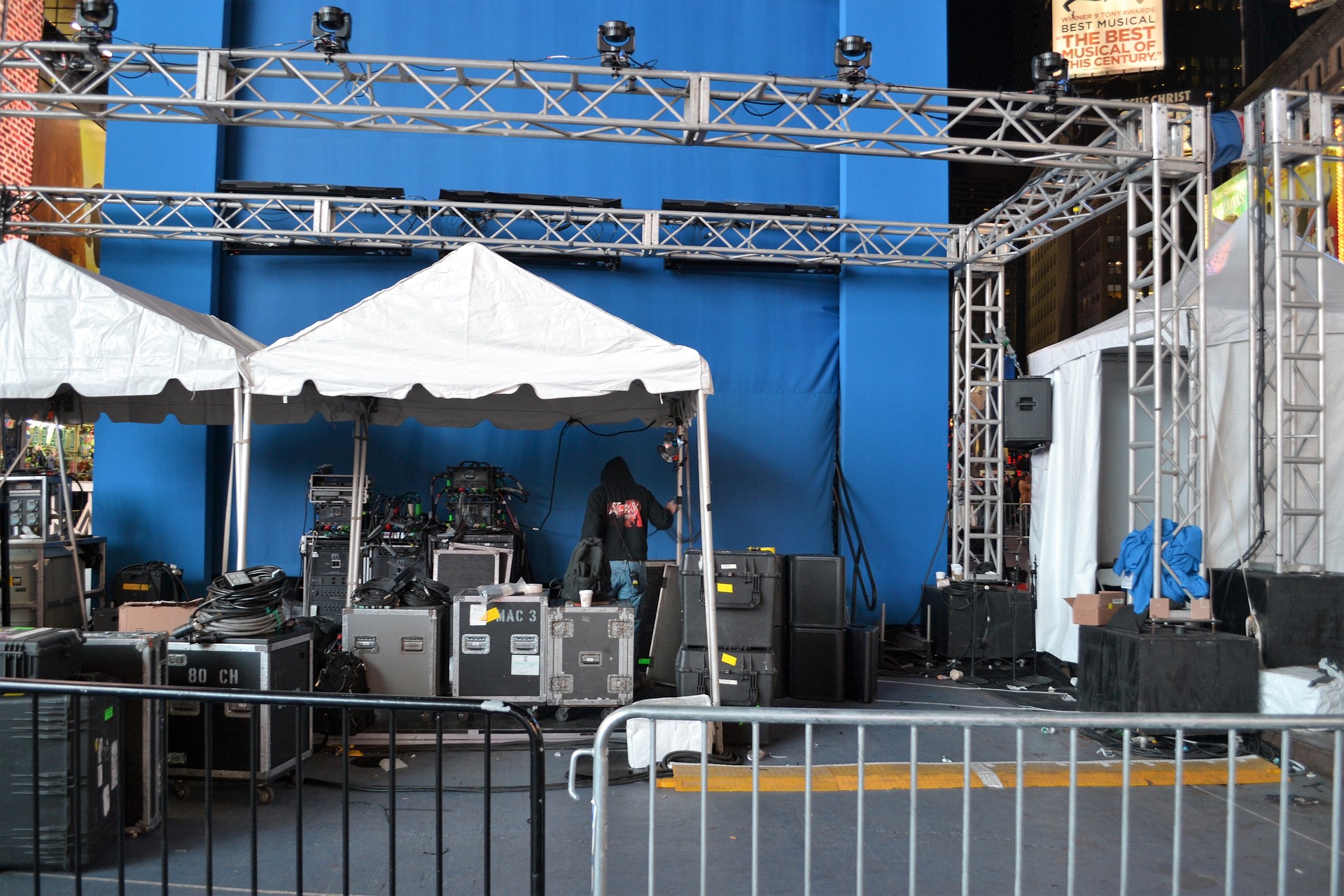
Photo by ArtisticOperations 1998 from Pixabay
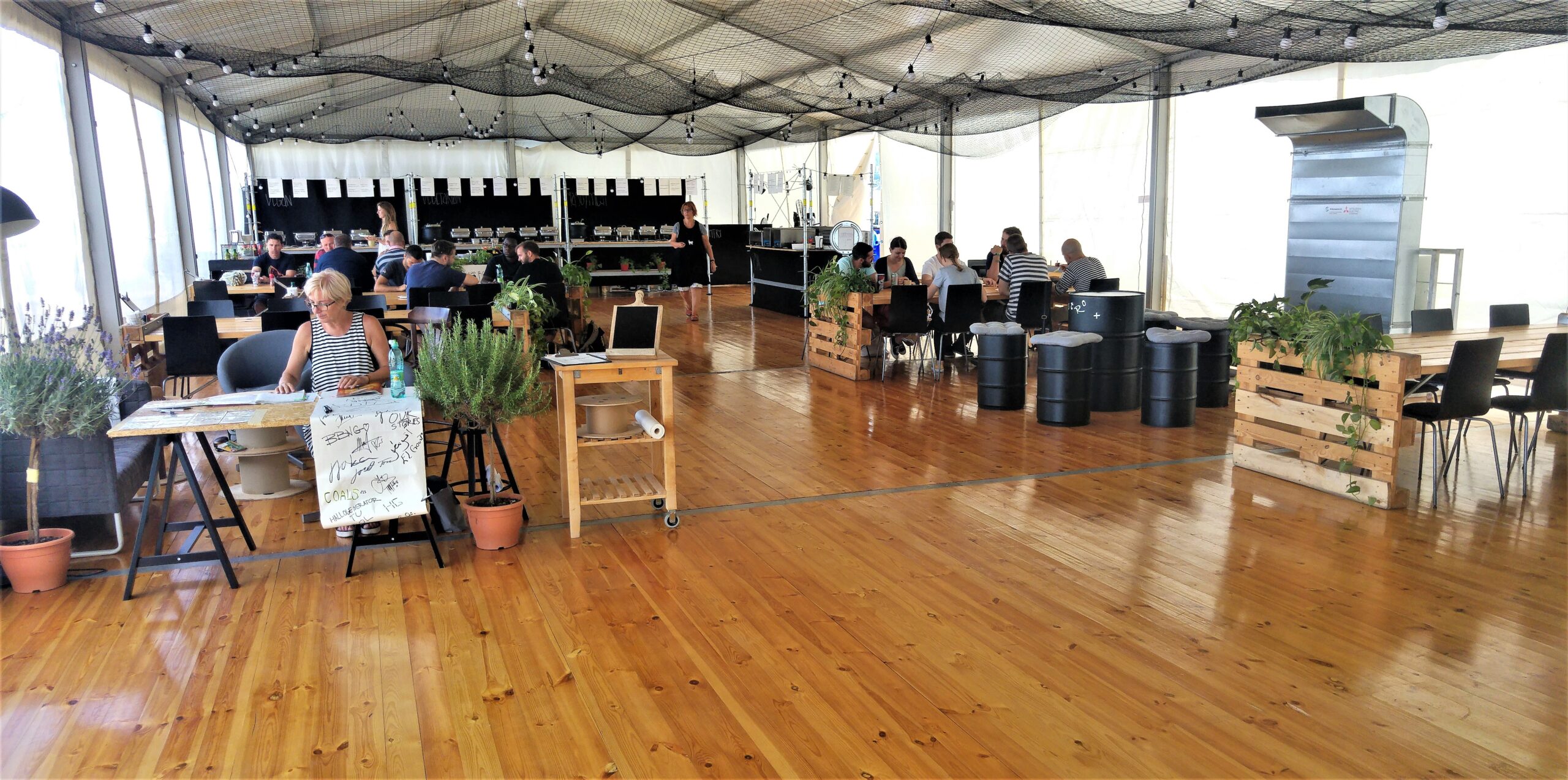
Photo by Holger Jan Schmidt
Barter Deal
A deal that involves no money. In the context of festivals, it might mean that the festival offers space to advertise a cause and a booth to an NGO free of charge. In return, the festival is able to add the NGO as a highlight to their program.
Break Down
"To dismantle equipment or stage setups, either between bands or at the end of the event." (from https://concertsavvy.com/music-industry-slang/). At festivals, this term applies not only to stage equipment but to all constructions that were put up to create the event (e.g. campsites, temporary roads, vendor stalls etc.).

Photo by Counselling from Pixabay
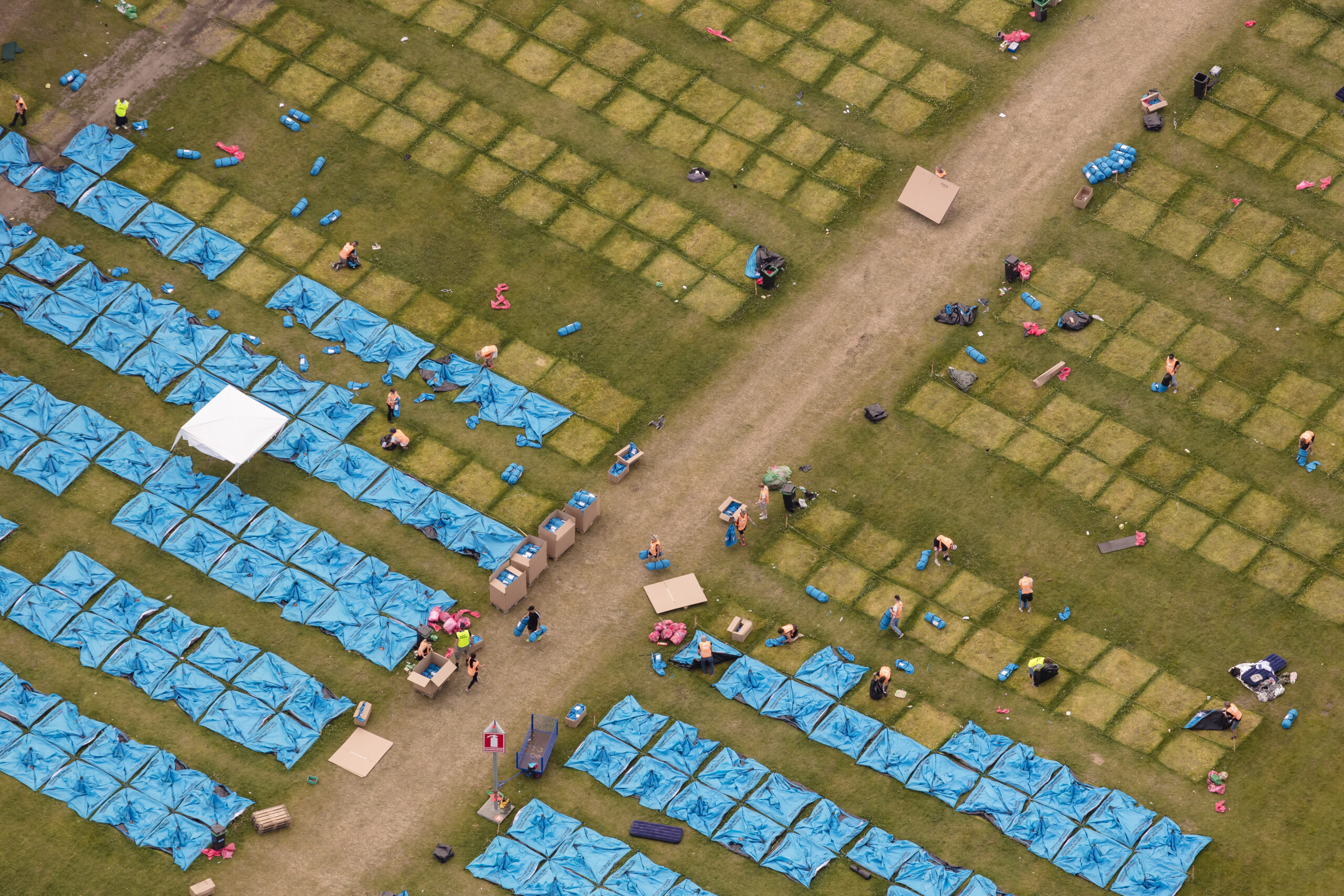
Photo by Stiig Hougese/SH Luftfoto
Camping
Describes the camping area of a festival, where people can bring tents and caravans to sleep in. Sometimes, the festival provides pre-pitched tents.
There are different types of camps/camping:
● Crew camping: A dedicated camping area for people working at the festival. Sometimes it is further divided into areas for production members, volunteers, security etc.
● Glamping: "Glamorous camping", a more comfortable form of camping with services like, e.g., pre-pitched tents, proper mattresses, larger tents, electricity, more exclusive access to (flushable) toilets and showers.
There are different types of camps/camping:
● Crew camping: A dedicated camping area for people working at the festival. Sometimes it is further divided into areas for production members, volunteers, security etc.
● Glamping: "Glamorous camping", a more comfortable form of camping with services like, e.g., pre-pitched tents, proper mattresses, larger tents, electricity, more exclusive access to (flushable) toilets and showers.

Photo by Matheus Bertelli-Pexels
● Green Camping: Campsites that you can only stay in if you promise to adhere to certain rules, e.g., separate and return your waste, refrain from using private diesel generators, be quiet during the night etc.
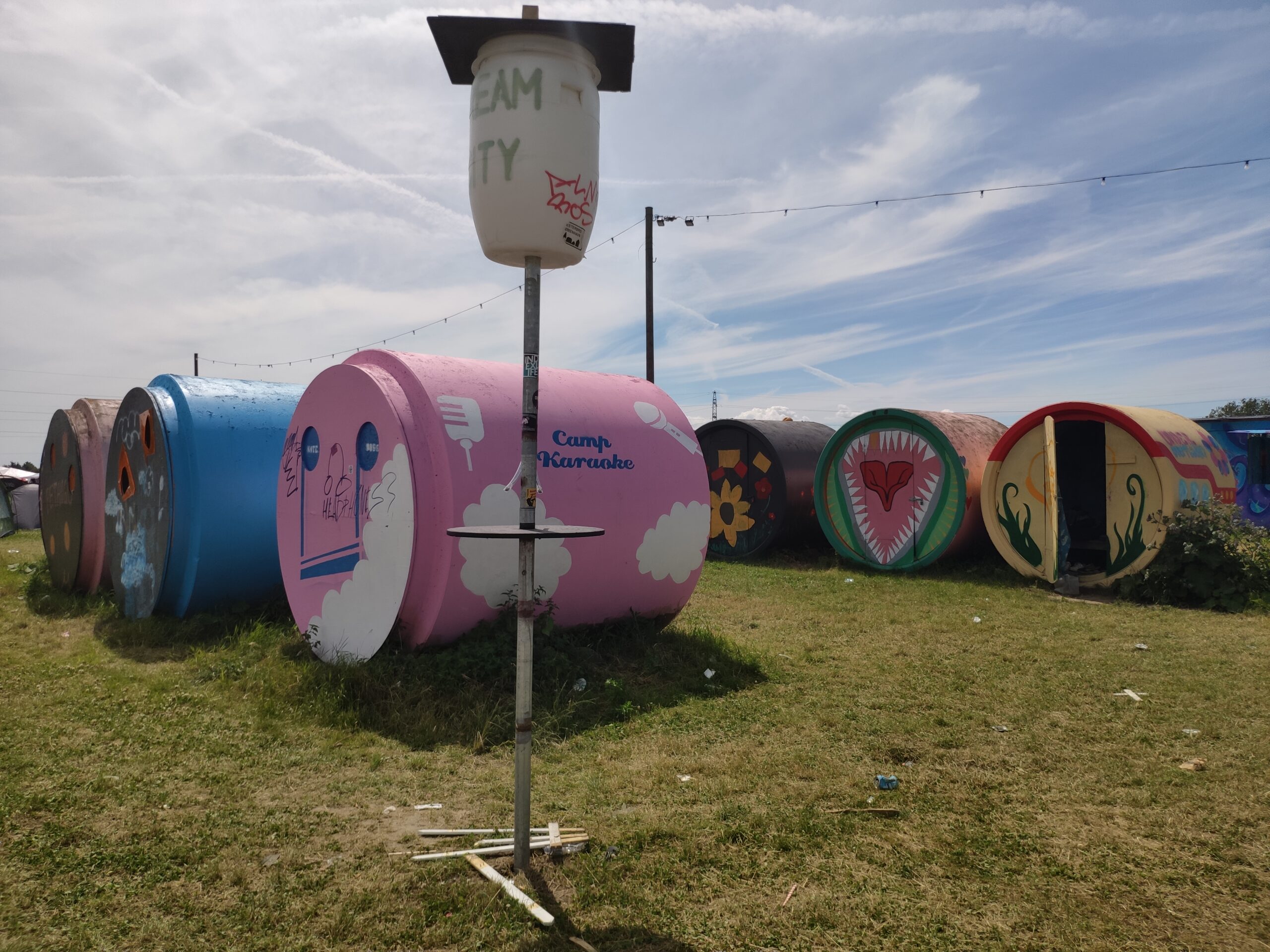
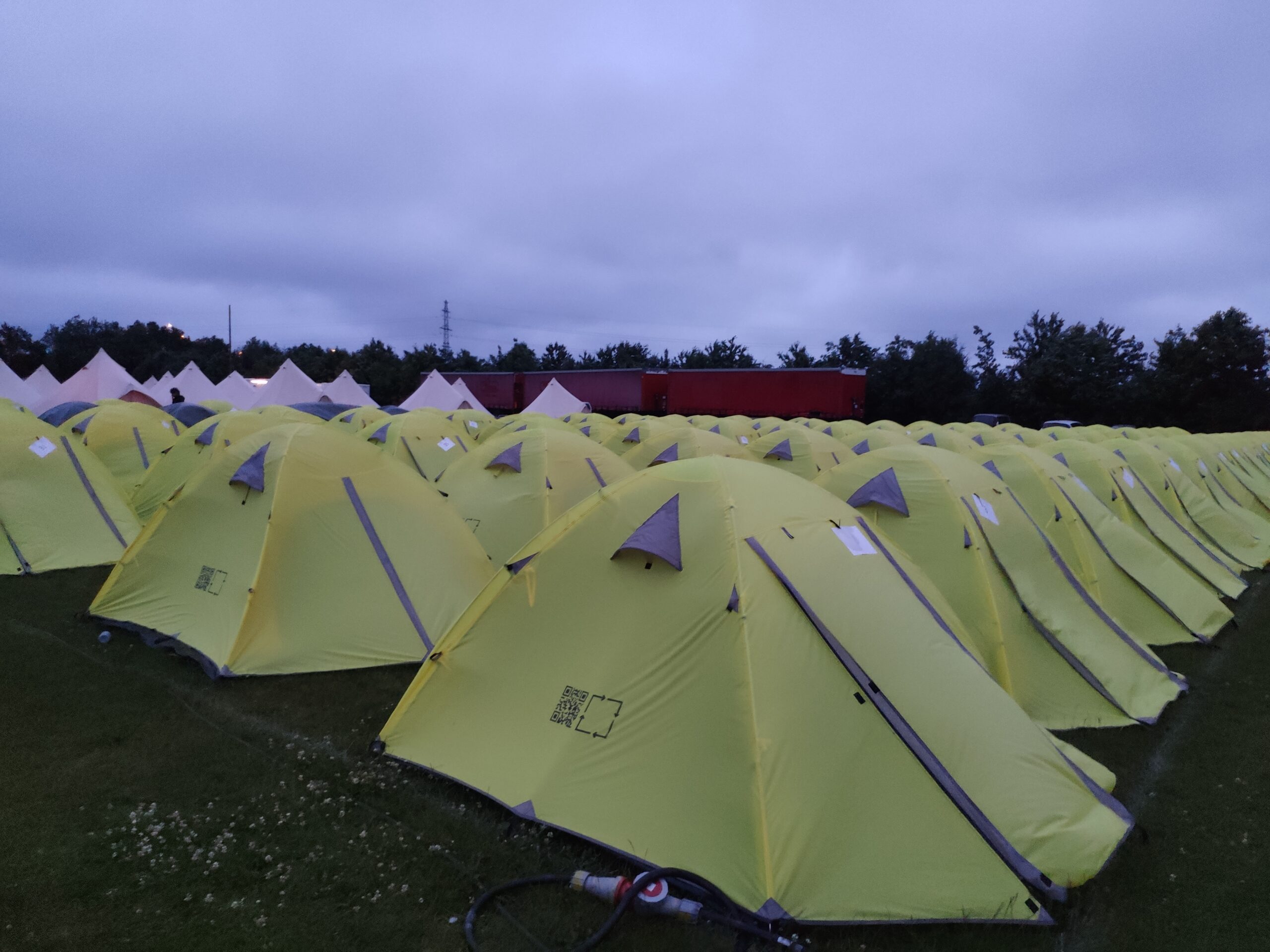


Photos by Katharina Weber
Car Pass/Vehicle Pass
Credentials you need to enter the festival site with your vehicle. They can be a sticker you apply to your windshield or a paper pass you have to place on the dashboard.

Photo by Judith Kaiser
Catering
This might mean two things:
a) food and beverages provided to everyone involved in a festival
b) food and beverages provided only to people working at a festival, e.g., the artists, artists' and festival crews, and other working personnel in a backstage area.
a) food and beverages provided to everyone involved in a festival
b) food and beverages provided only to people working at a festival, e.g., the artists, artists' and festival crews, and other working personnel in a backstage area.

Photo by Naim Benjelloun from Pexels
Crew
Everyone who works on realizing the festival. Many festivals have specific crews for certain areas: site crew, volunteers, catering, stage crew, production team etc.
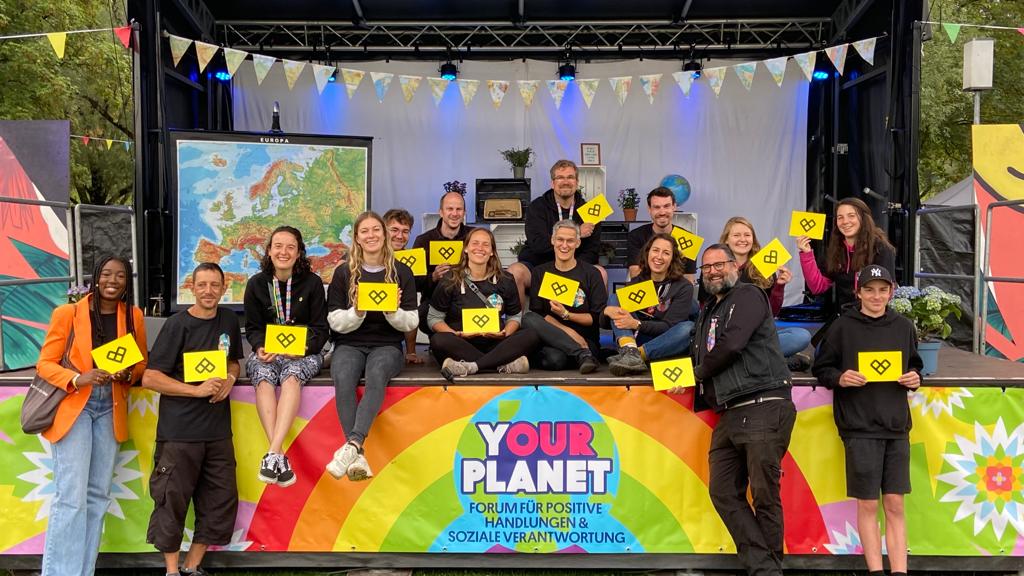
Photo by Kurt Achatz
Fences
Constructions, usually made out of metal or wood, used to separate one area from another. There are lots of different kinds of fences for festivals and other events, e.g., "Mannheimer" and "Hamburger" fences.
More information on fence types (German):
https://www.sabelstein.com/de/magazin/ratgeber/absperrgitter-veranstaltungen/
https://www.heras-mobile.co.uk/fencing
More information on fence types (German):
https://www.sabelstein.com/de/magazin/ratgeber/absperrgitter-veranstaltungen/
https://www.heras-mobile.co.uk/fencing

Photo by Judith Kaiser
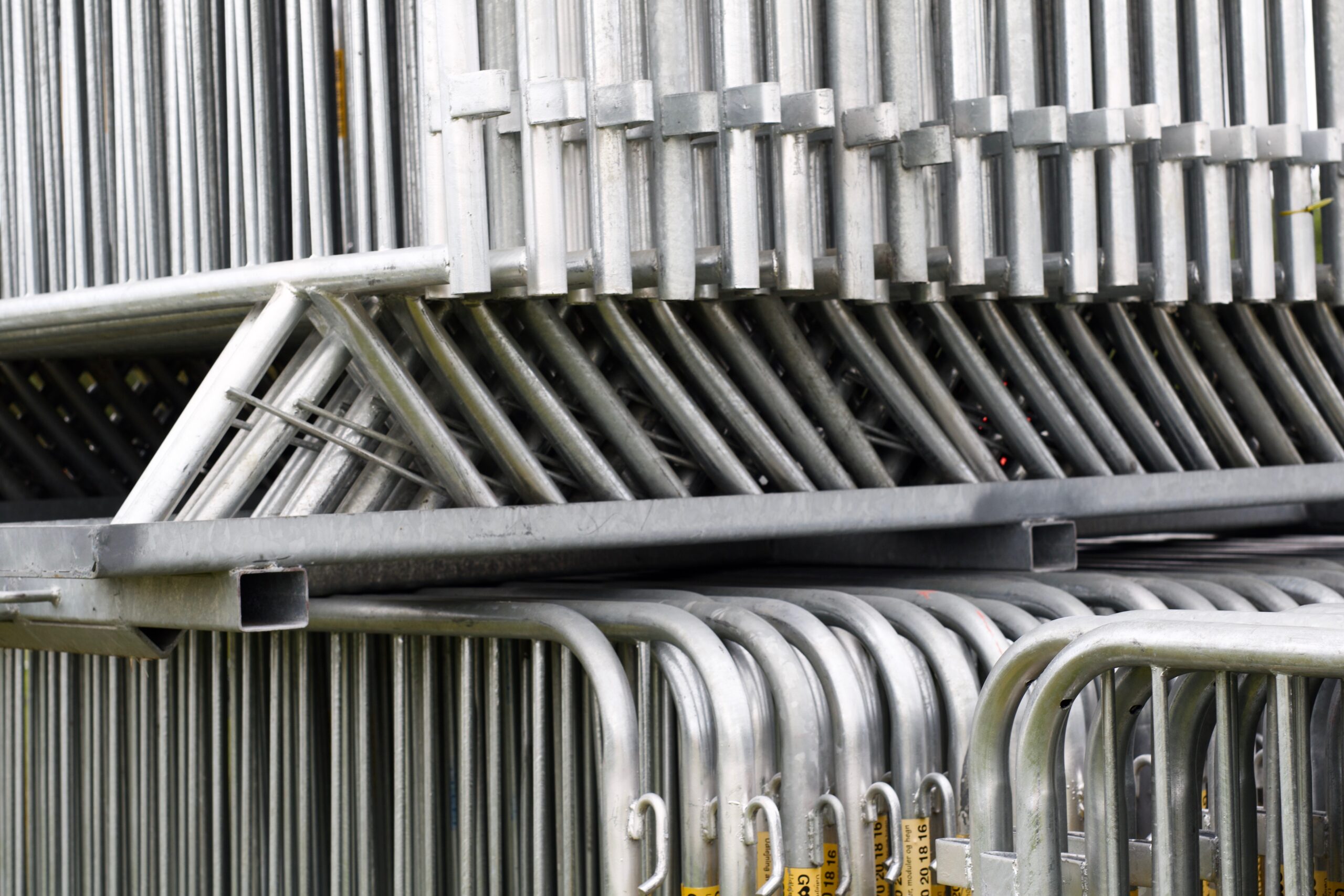
Photo by Anders Hjortkær
Festival
This can mean several things. Usually, it refers to a longer event with some kind of curated programme. Several factors define a festival:
● Site: Festivals are often outdoors, but there are also examples of indoor festivals in arenas/stadiums. They can take place on a central site close to nature ("greenfield festivals") or in several locations (e.g., clubs) in a city centre (“city festivals” or "boutique festivals").
● Duration: They often last for two days or more, but there are also examples of one-day festivals.
● Number of stages: Often, festivals have several stages, but there are also examples of festivals with only a single stage.
● Programme: The programme often focuses on music, but there are also arts, food, activist, and other kinds of festivals, and combinations thereof.
● Number of visitors: This can vary vastly, from a couple of hundreds to more than 100,000.
In the music context, below a certain number of bands, visitors and days, you would speak of a "concert" rather than a festival. How many you need to count as a festival can't be generalized though and has to be judged in each individual case.
● Site: Festivals are often outdoors, but there are also examples of indoor festivals in arenas/stadiums. They can take place on a central site close to nature ("greenfield festivals") or in several locations (e.g., clubs) in a city centre (“city festivals” or "boutique festivals").
● Duration: They often last for two days or more, but there are also examples of one-day festivals.
● Number of stages: Often, festivals have several stages, but there are also examples of festivals with only a single stage.
● Programme: The programme often focuses on music, but there are also arts, food, activist, and other kinds of festivals, and combinations thereof.
● Number of visitors: This can vary vastly, from a couple of hundreds to more than 100,000.
In the music context, below a certain number of bands, visitors and days, you would speak of a "concert" rather than a festival. How many you need to count as a festival can't be generalized though and has to be judged in each individual case.
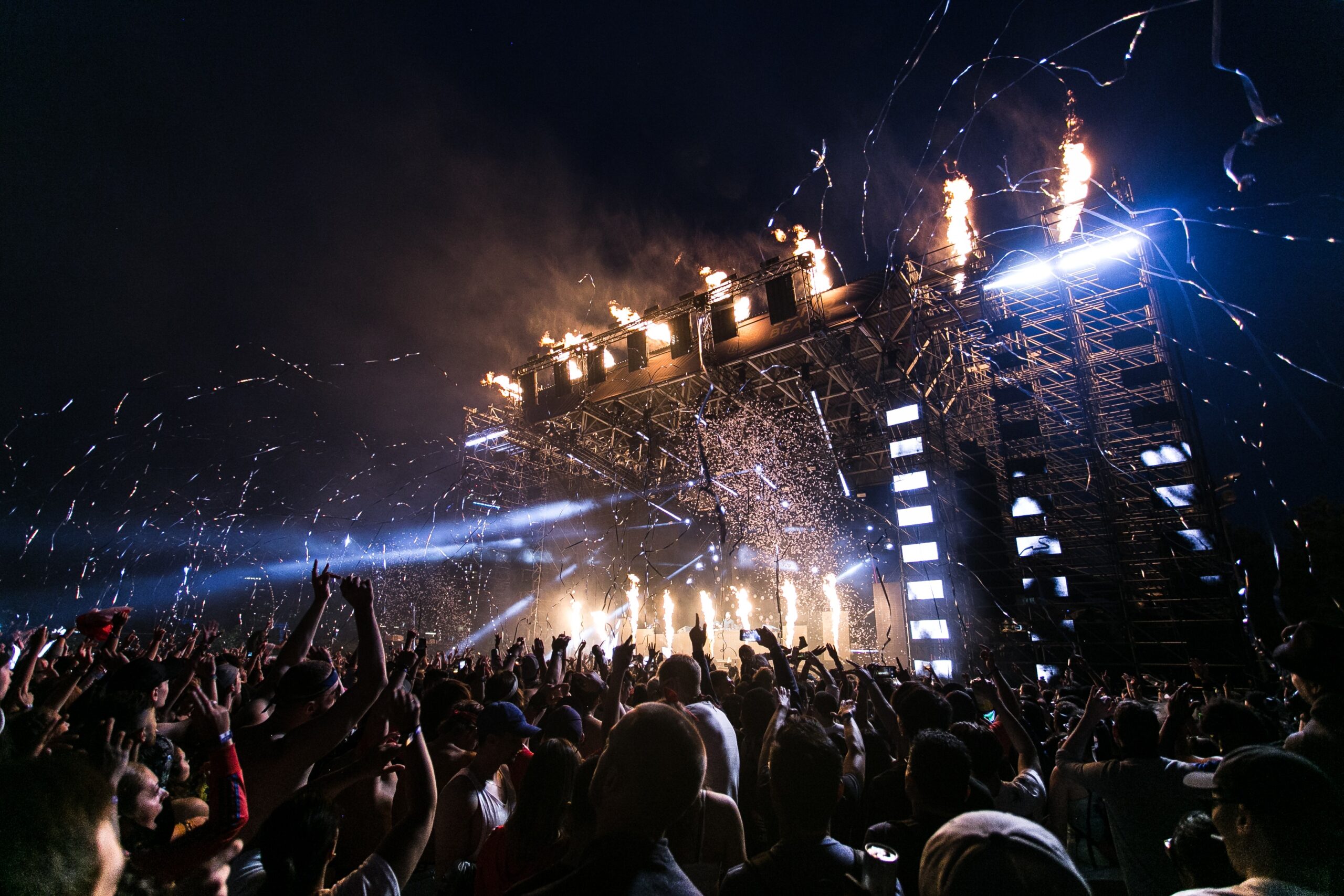
Photo by Wendy Wei from Pexels
Fire protection
There are different fire protection regulations at festivals. This concerns materials used for building and decoration as well as merch that is given out to the audience. Fire protection must be observed, because otherwise the festival may not be approved by the local authority and cannot take place. Laws and regulations vary from country to country.
For more info on Germany, check out:
https://www.allbuyone.com/de/backstage/eventlexikon/brandschutzklasse-b1-nach-din-4102.html#
For more info on Germany, check out:
https://www.allbuyone.com/de/backstage/eventlexikon/brandschutzklasse-b1-nach-din-4102.html#
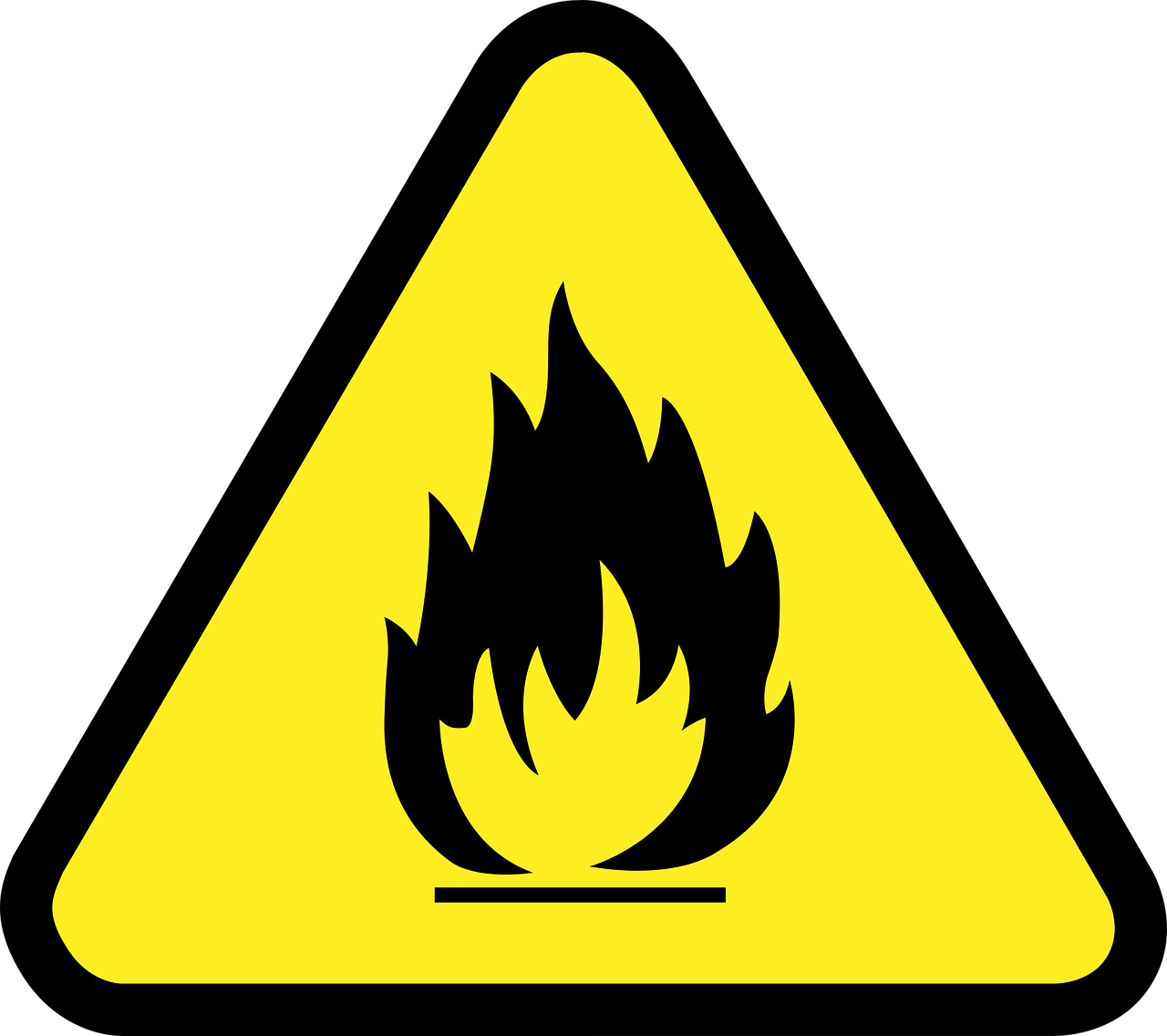
Photo by DavidRockDesign from Pixabay
Front of House (FoH)
a) The areas of a festival that are accessible for all regular visitors
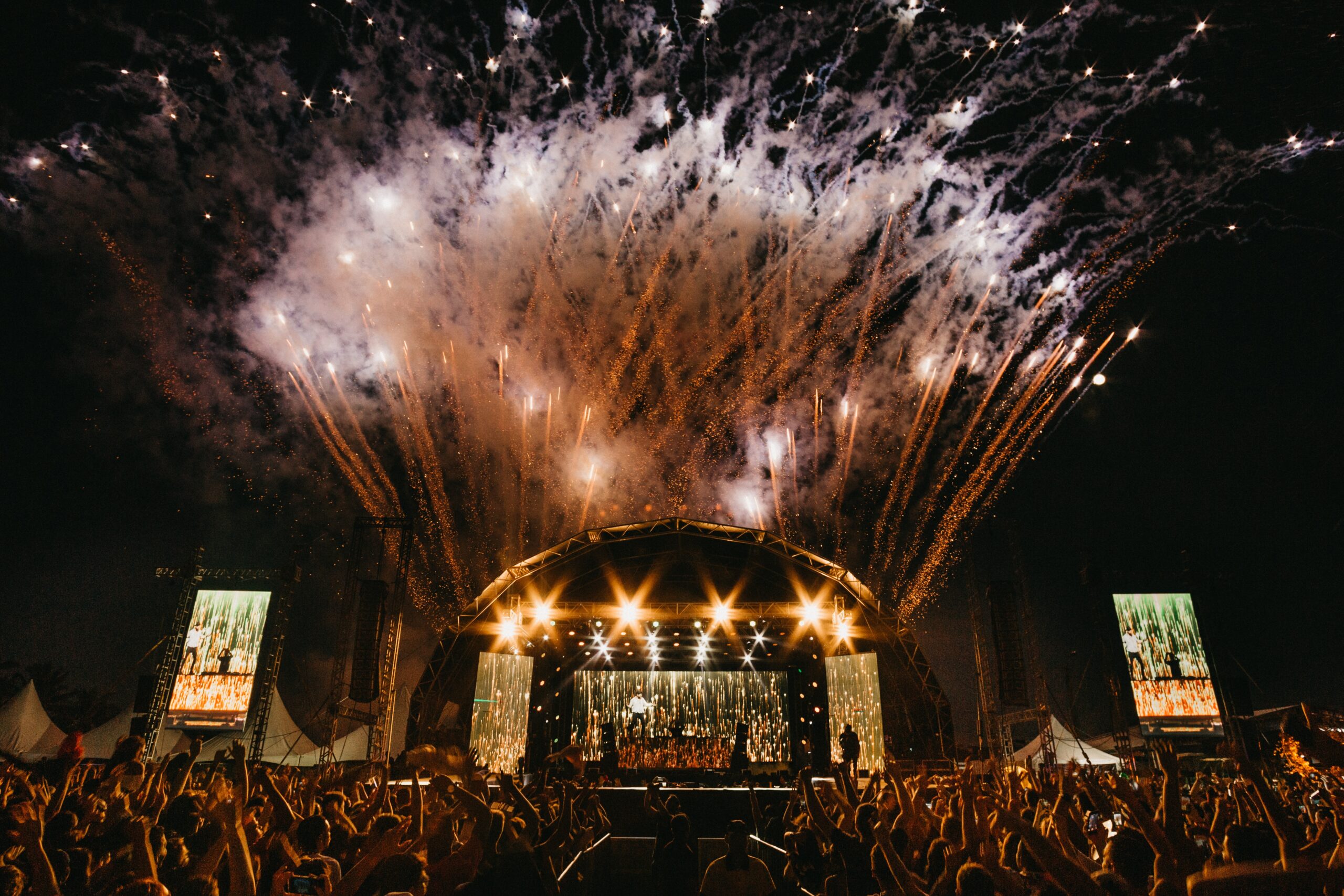
Photo by Jonathan Borba from Pexels
b) The area opposite the stage right within the audience that houses the mixing board. From here, the sound engineers control the sound of the show while it is happening.

Photo by Svenja Klemp
Get in and Set up
● Get in: the point in time after which non-festival crew people like NGO teams are allowed to enter the festival site, for example for building up their stalls.
● Set up: the subsequent time for setting everything up. The general audience is not allowed to be on the festival site during this time.
● Set up: the subsequent time for setting everything up. The general audience is not allowed to be on the festival site during this time.
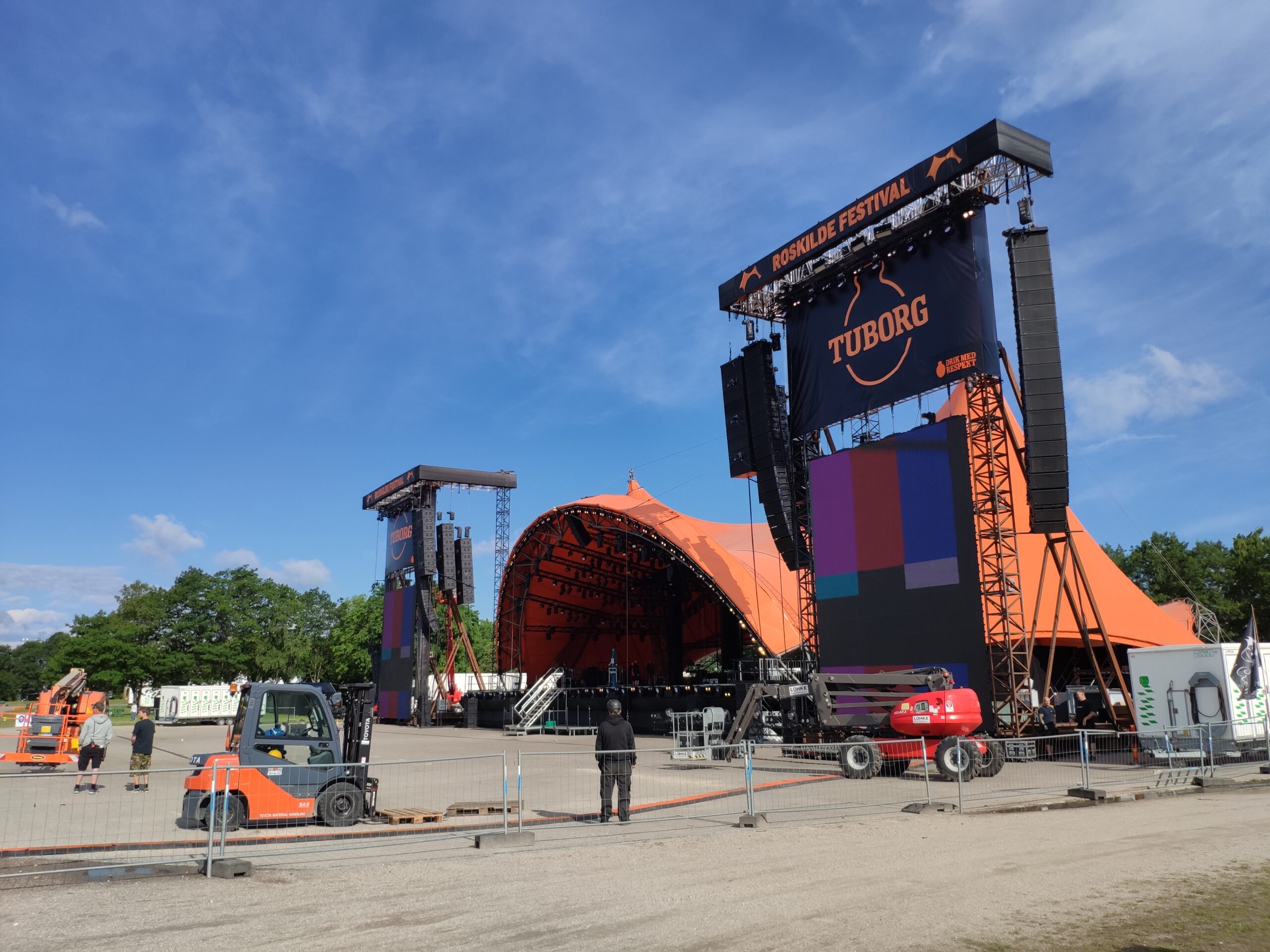
Photo by Katharina Weber
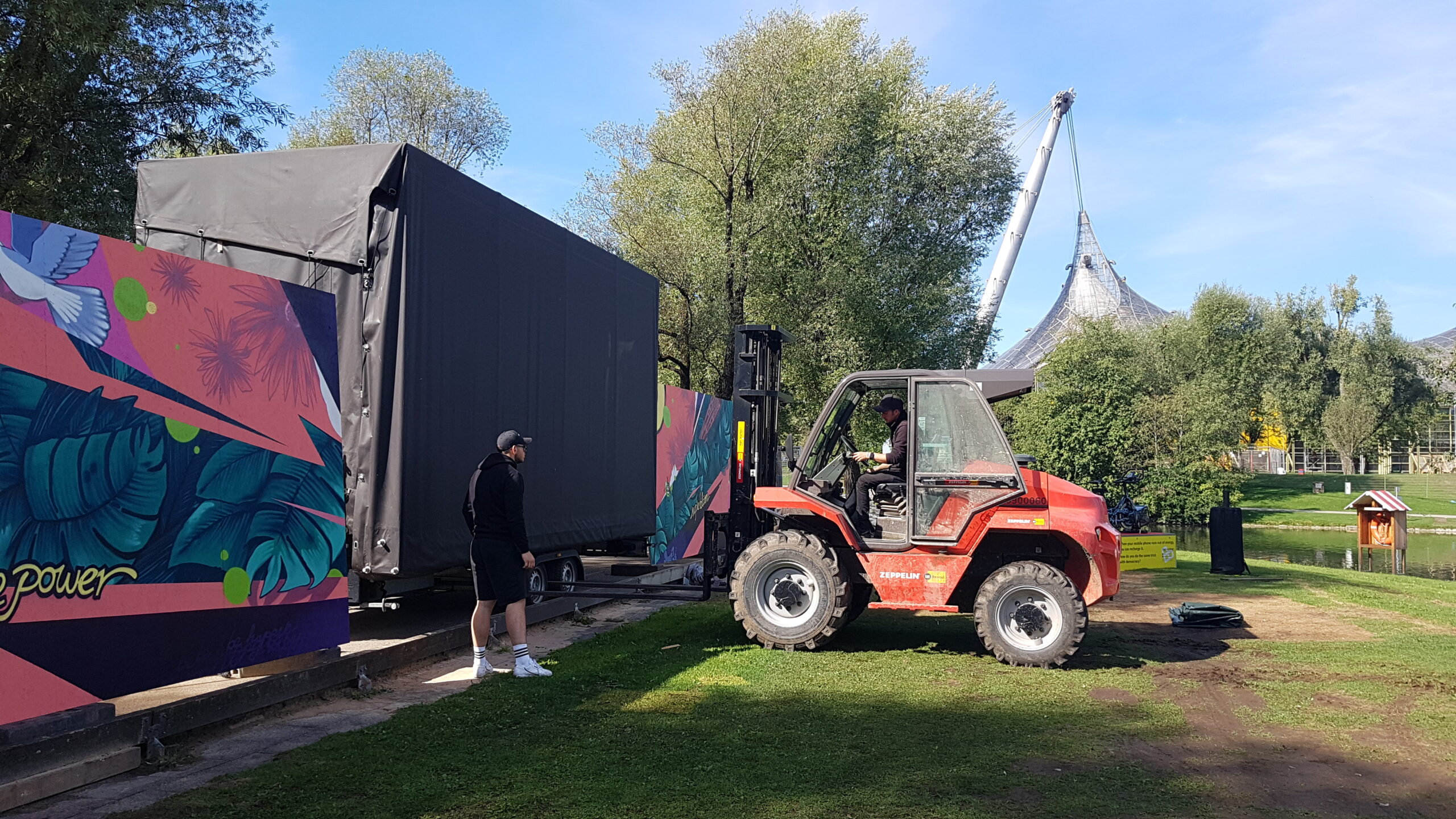
Photo by Judith Kaiser
Hands
Employees of a festival that are responsible for executing what the managers have planned, e.g., stagehands.
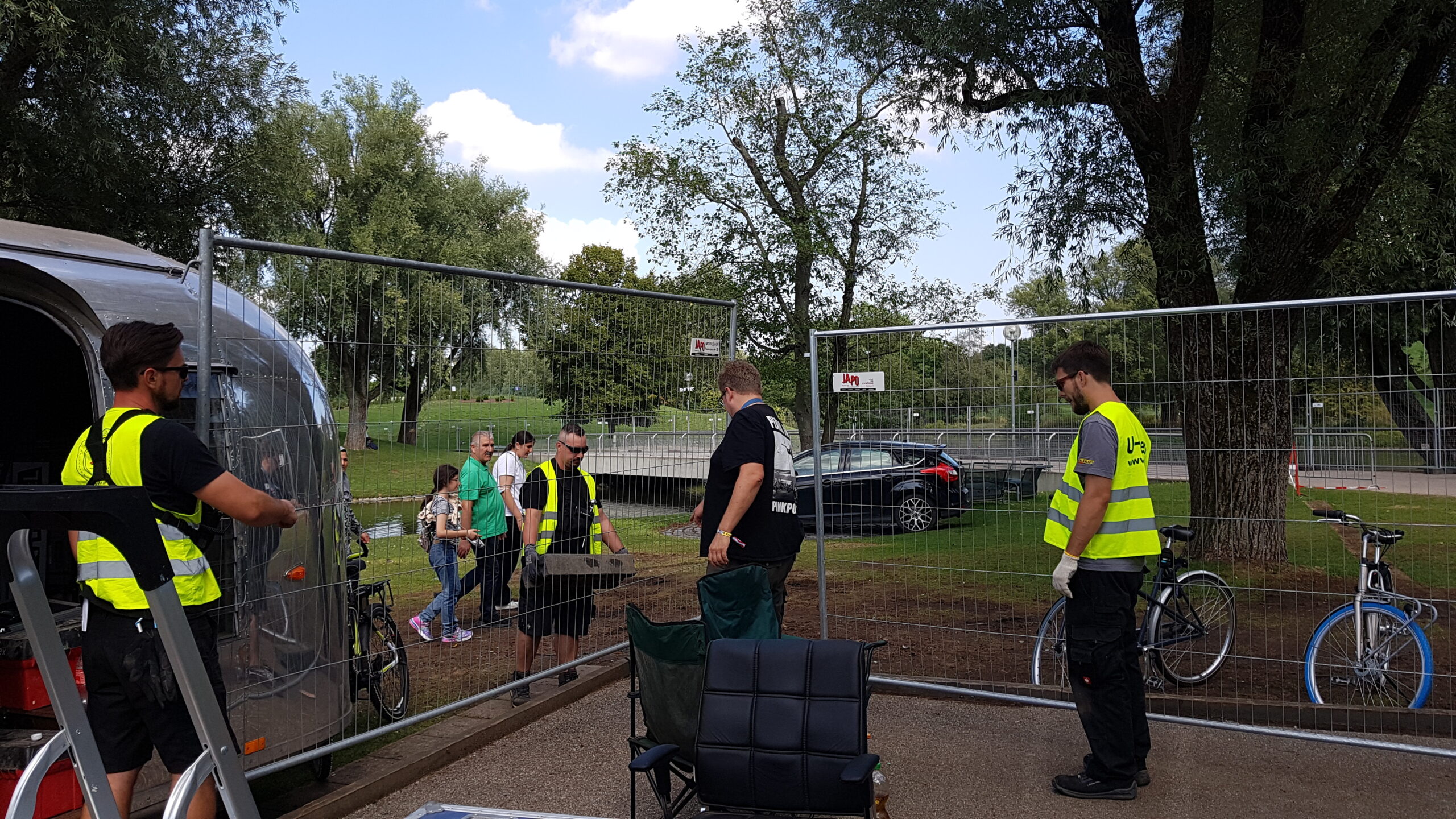
Photo by Judith Kaiser
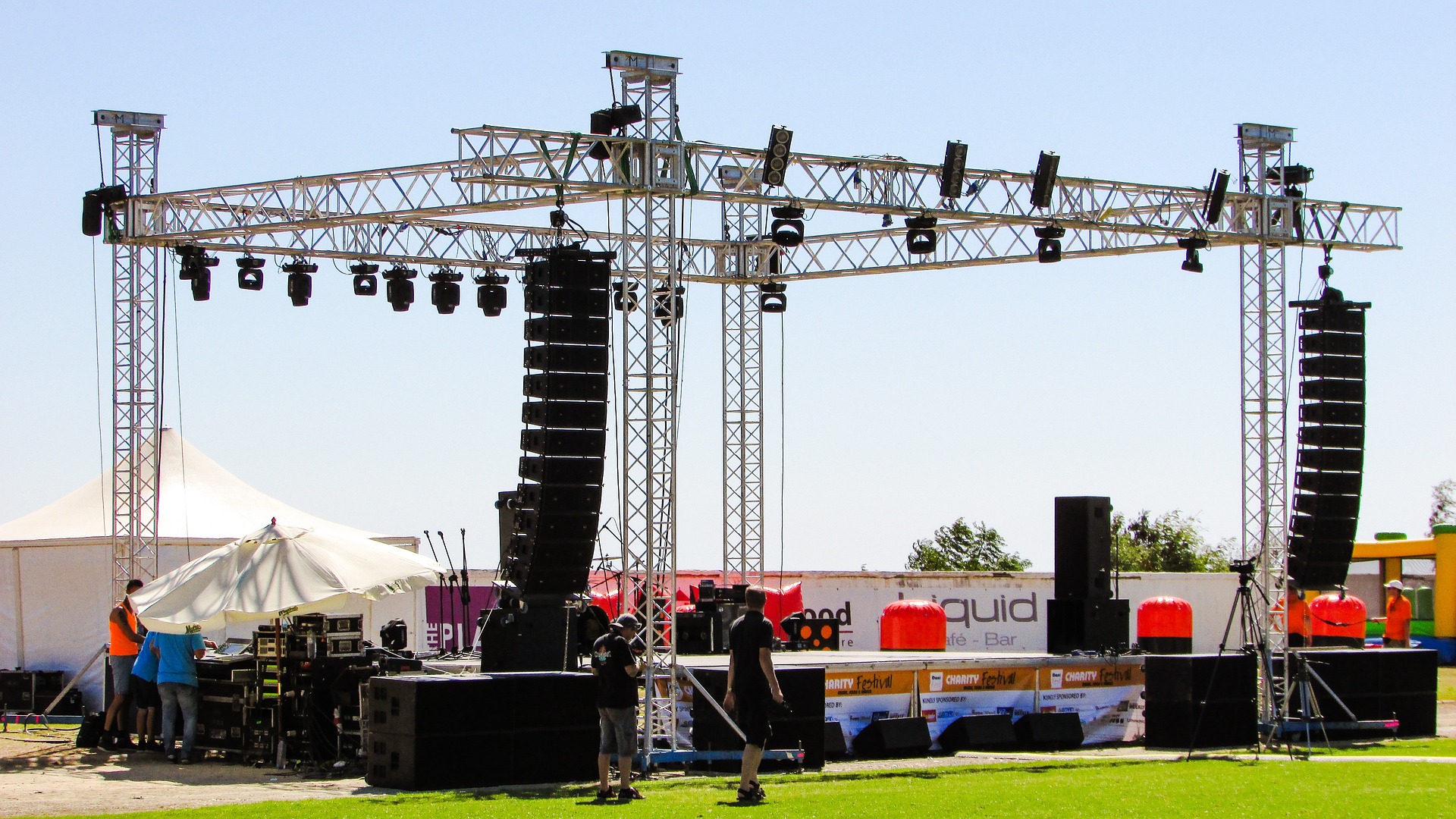
Photo by dimitrisvetsikas1969 from Pixabay
Headliner
“The ‘biggest’ act of a show or event, usually the highest paid and the last to perform.” (from https://concertsavvy.com/music-industry-slang/)

Photo by stokpic from Pixabay
Infield
All areas on the festival site (except camping) where regular festival visitors can go. It is usually only accessible while the festival site is opened (e.g., closed during the night).
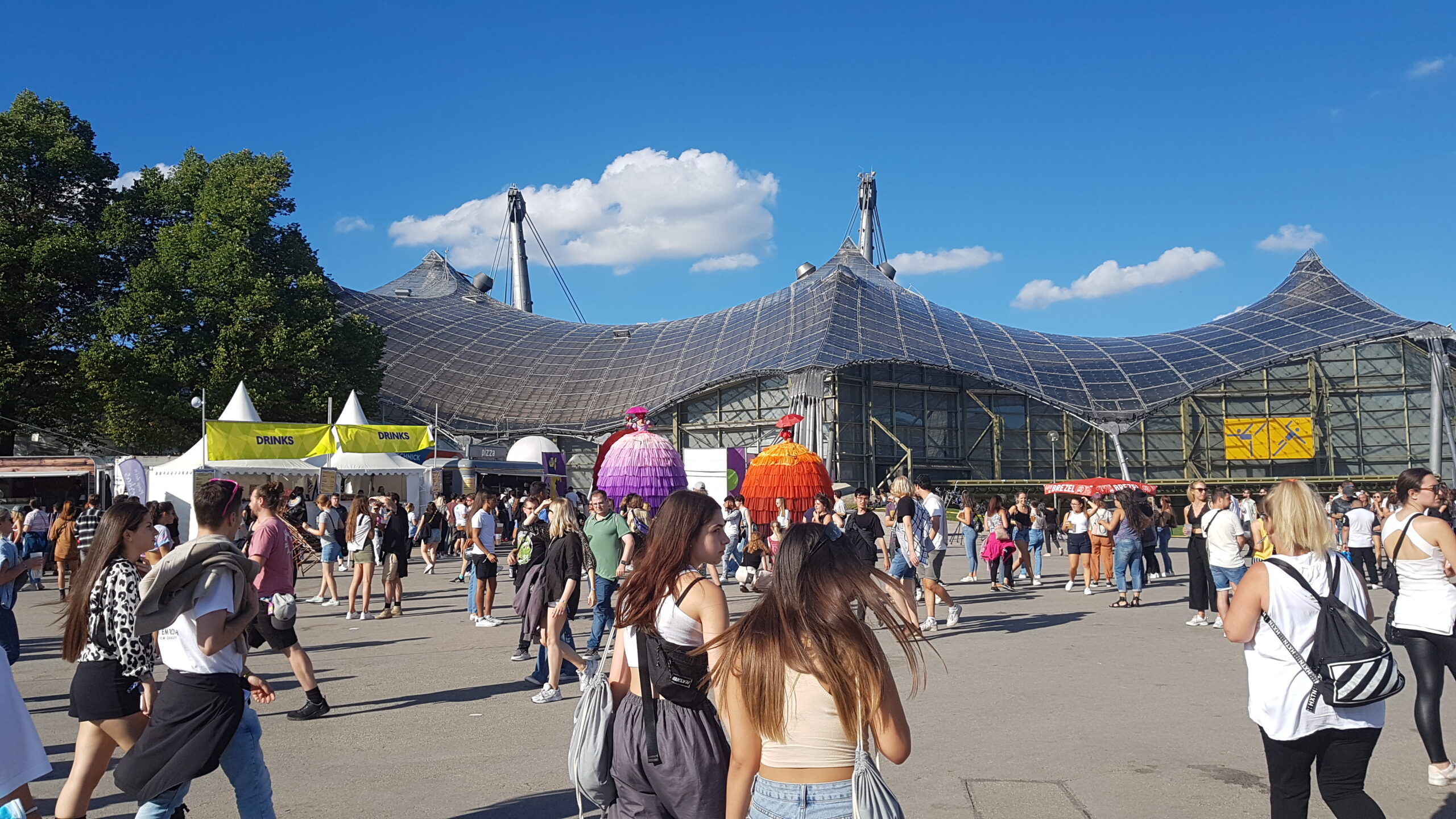
Photo by Judith Kaiser
Learning Mobility
The EPLM (European Platform on Learning Mobility) defines learning mobility in the youth field as the mobility of young people (transnationally, regionally or online), undertaken freely and voluntarily, for a specific period of time, consciously organised for educational purposes, to impact on the local community or to acquire new competences (knowledge, skills, attitudes or values). It encompasses a wide variety of project formats and activities, and can be implemented in informal or non-formal education settings.
Festivals present learning opportunities and can develop competences, with or without your project. There are several examples and cases presented in our FUSION guide about how to tap into the learning potential of festival environments. Just for a second, imagine the amount of planning and research it takes to go to a festival in another country (helps you to develop your intercultural skills), the budgeting and conversion into other currencies (financial and mathematical competences), meeting, discussing and exchanging views and information with people from different backgrounds and from different countries. It is a vast potential. In fact, it is a learning environment waiting for exploration.
Find out more about this concept on the European Platform on Learning Mobility: https://pjp-eu.coe.int/en/web/youth-partnership/european-platform-on-learning-mobility
Festivals present learning opportunities and can develop competences, with or without your project. There are several examples and cases presented in our FUSION guide about how to tap into the learning potential of festival environments. Just for a second, imagine the amount of planning and research it takes to go to a festival in another country (helps you to develop your intercultural skills), the budgeting and conversion into other currencies (financial and mathematical competences), meeting, discussing and exchanging views and information with people from different backgrounds and from different countries. It is a vast potential. In fact, it is a learning environment waiting for exploration.
Find out more about this concept on the European Platform on Learning Mobility: https://pjp-eu.coe.int/en/web/youth-partnership/european-platform-on-learning-mobility
Lineup
The list of musicians set to play at an event. These can be sorted alphabetically, but more often, they are ranked by how popular the musicians are.
Depending on the programme of an event, line-ups can also contain restaurants, fine artists and speakers.
When the artists are arranged according to the time they perform at the event, the lineup is turned into a "timetable" or "running order".
Depending on the programme of an event, line-ups can also contain restaurants, fine artists and speakers.
When the artists are arranged according to the time they perform at the event, the lineup is turned into a "timetable" or "running order".

Flyer by Roskilde Festival
Load In/Load Out
“When the band and/or crew begin unloading and setting up their equipment. / When the band and/or crew begin carrying their musical equipment out of a venue.” (from https://concertsavvy.com/music-industry-slang/)
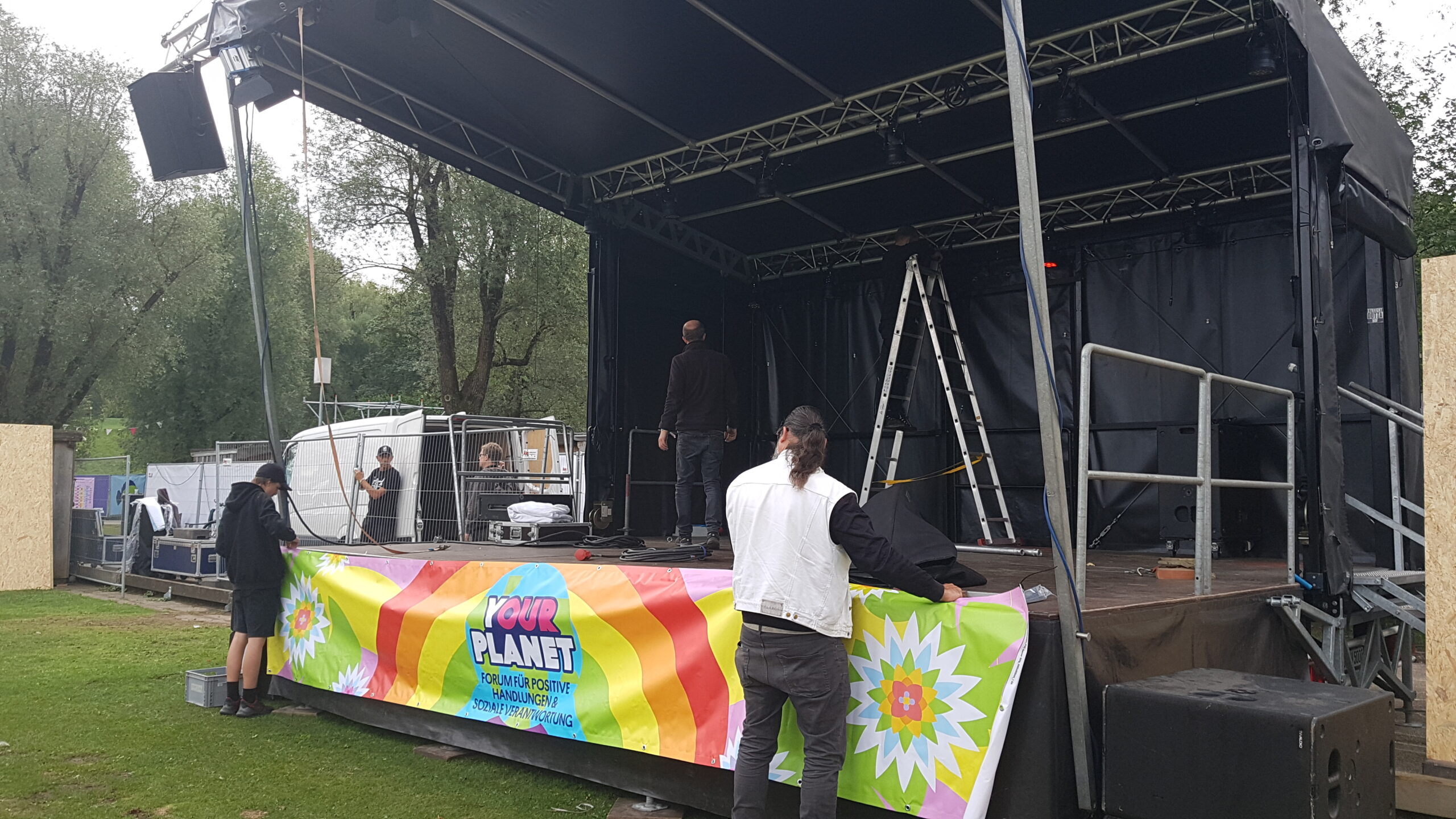
Photo by Judith Kaise
Merch/Merchandise
Any items sold by the artist and/or venue at an event, usually with brands, names or trademarks and sometimes including the location(s) and/or date(s) of the tour/event. Typical merch items are clothing, posters, keychains, and CDs, but they can be anything with the name of the band/event on it. Also called swag.
On festivals, there is usually a central stall where merch is sold – merch of the festival and of the participating musicians. Merch cannot be sold individually at other booths without first arranging terms with the festival organizers.
On festivals, there is usually a central stall where merch is sold – merch of the festival and of the participating musicians. Merch cannot be sold individually at other booths without first arranging terms with the festival organizers.
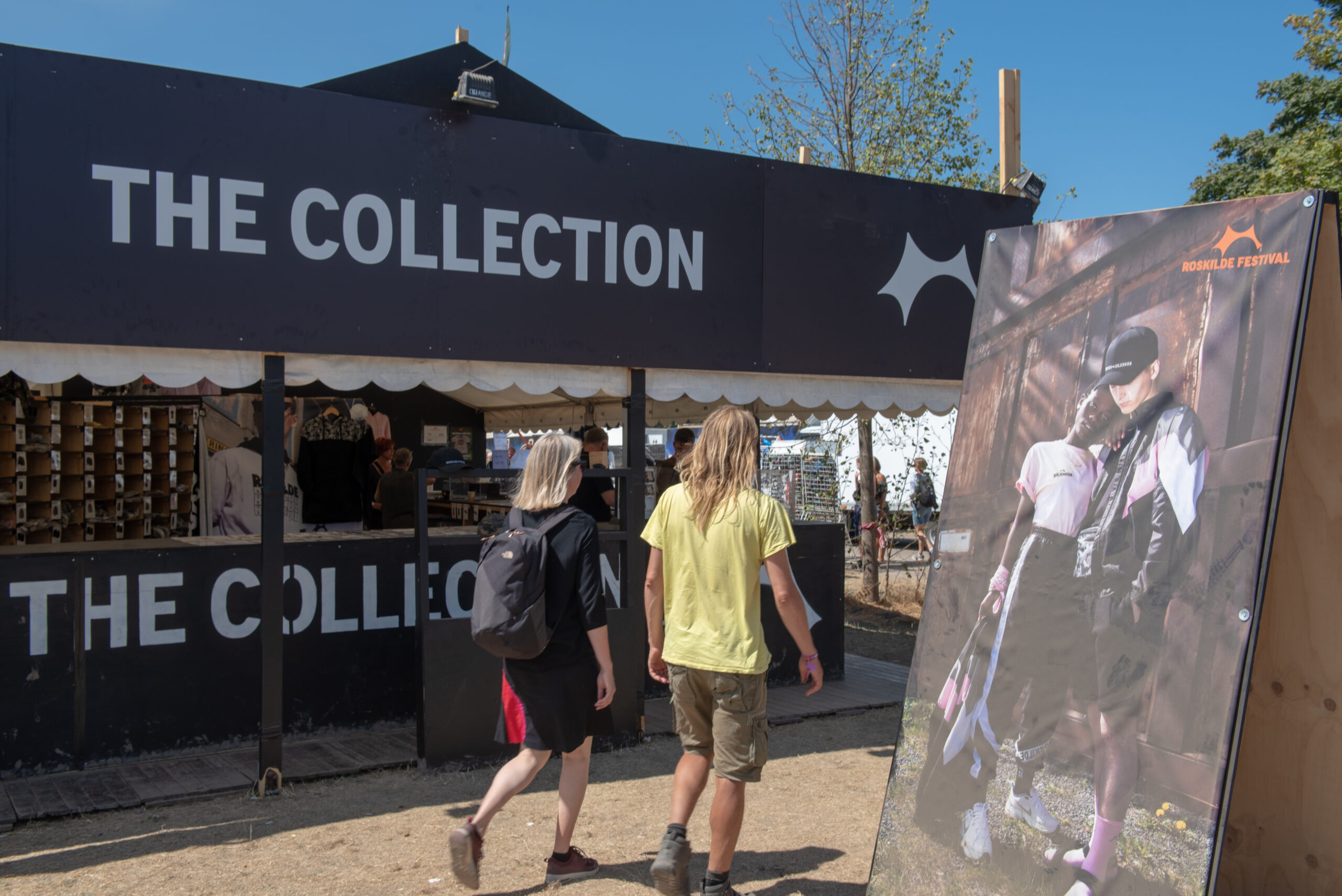
Photo by Anders Hjortkær

Photo by Holger Jan Schmidt
Pass/Pass System
A pass system determines who is allowed to enter which area on a festival site. Passes often come in the form of a little paper card that is wrapped in a plastic case and worn around the neck, or as wristbands. Wristbands can have different colours, or they come with a little numbered plastic chip. The numbers also determine which areas the bearer can access.
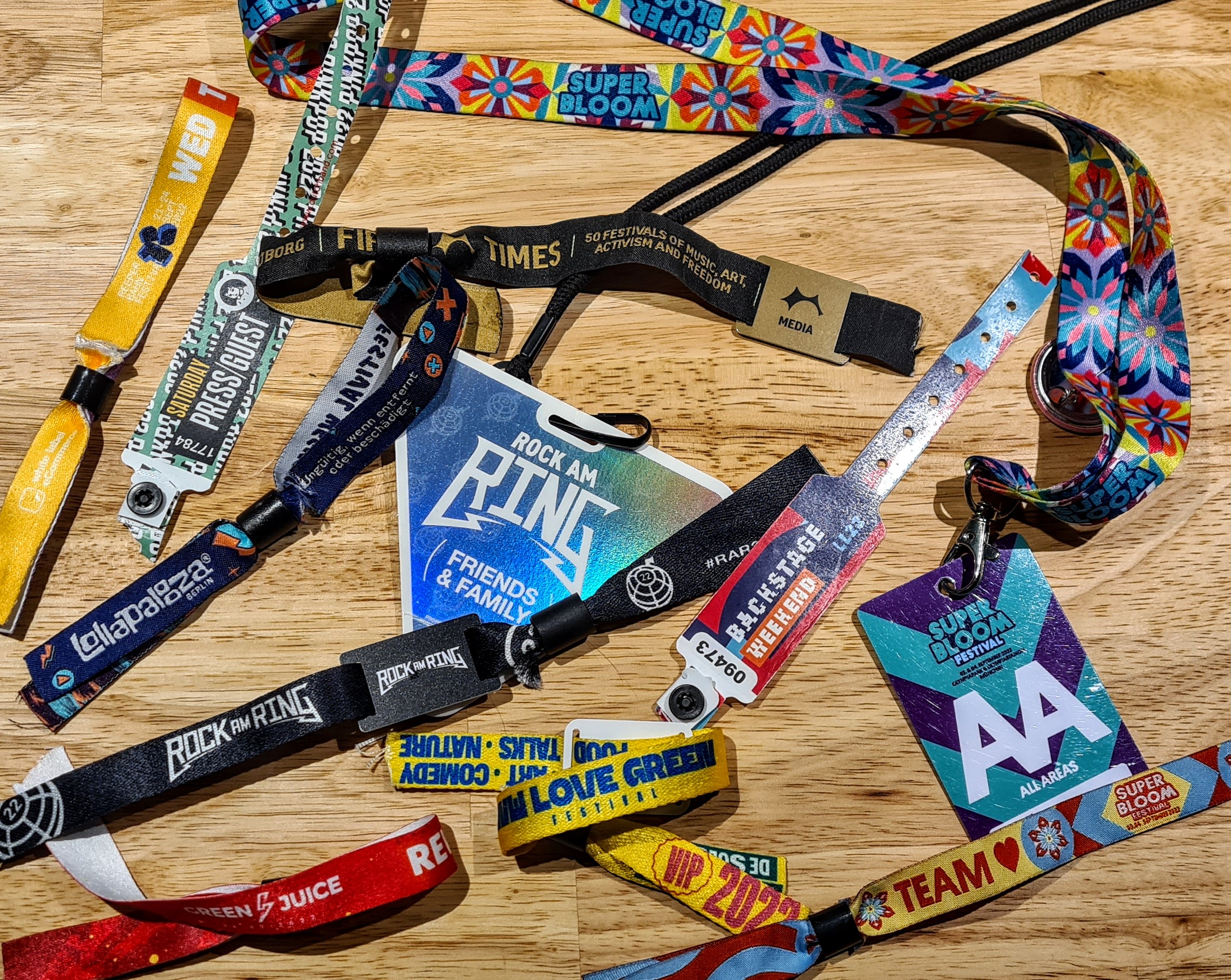
Photo by Holger Jan Schmidt
Photographer’s Pit
The area between the stage and the crowd barrier where photographers are allowed to take pictures of the bands performing, usually only during the first few songs. This is also where security stands to monitor the crowd and to handle crowd surfers.
Having a photo pass doesn't guarantee automatic access to the pit, and it doesn't necessarily mean you are allowed to take pictures from the public area in front of the stage.
Having a photo pass doesn't guarantee automatic access to the pit, and it doesn't necessarily mean you are allowed to take pictures from the public area in front of the stage.
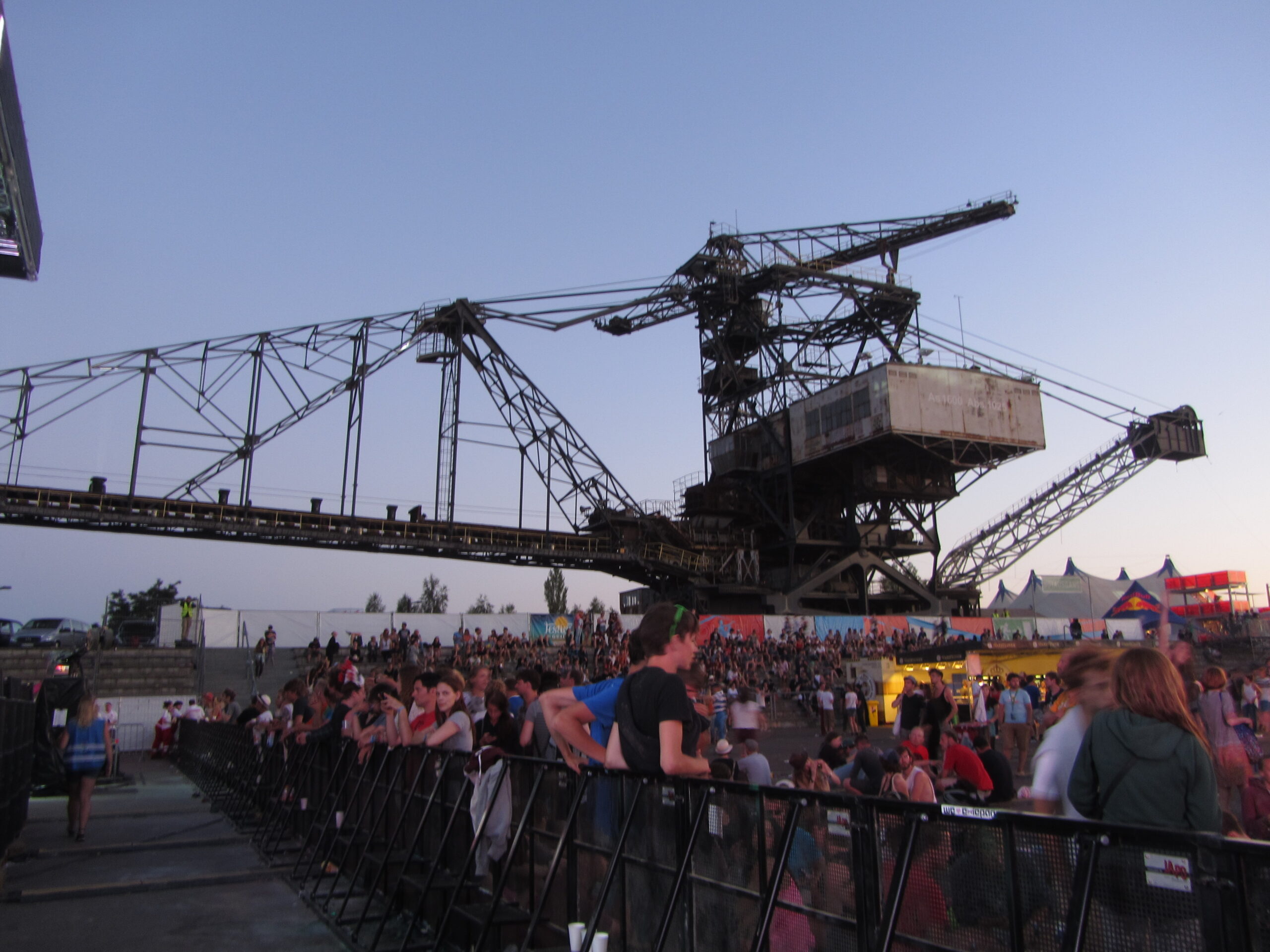
Photo by Katharina Weber

Photo by Holger Jan Schmidt
Production
This can mean several things:
a) everything needed to put on a show, including stage, sound, lights, backline, backdrop, etc. These can be either supplied by a venue or brought by a touring band.
a) everything needed to put on a show, including stage, sound, lights, backline, backdrop, etc. These can be either supplied by a venue or brought by a touring band.
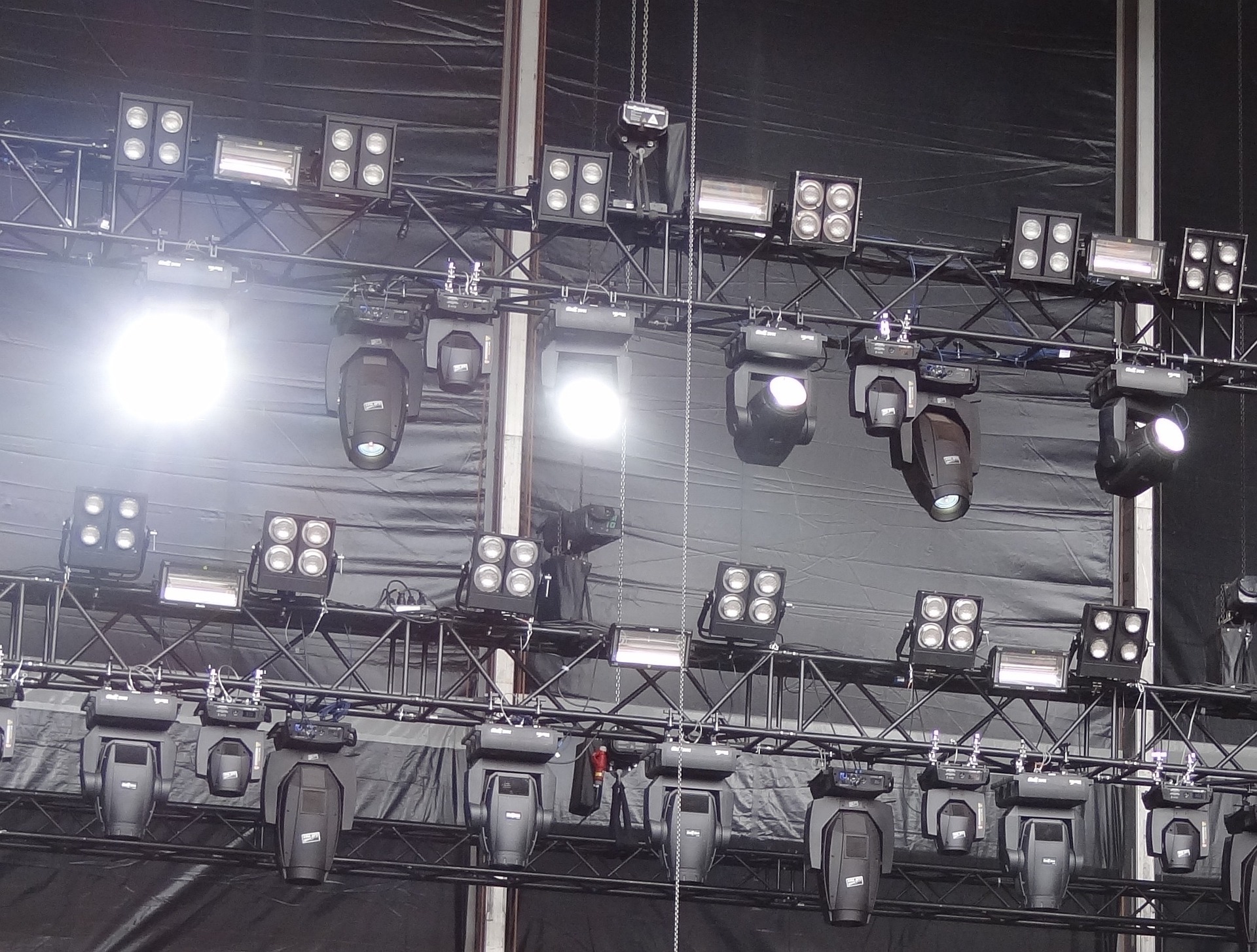
Photo by Beeki from Pixabay
b) the production team
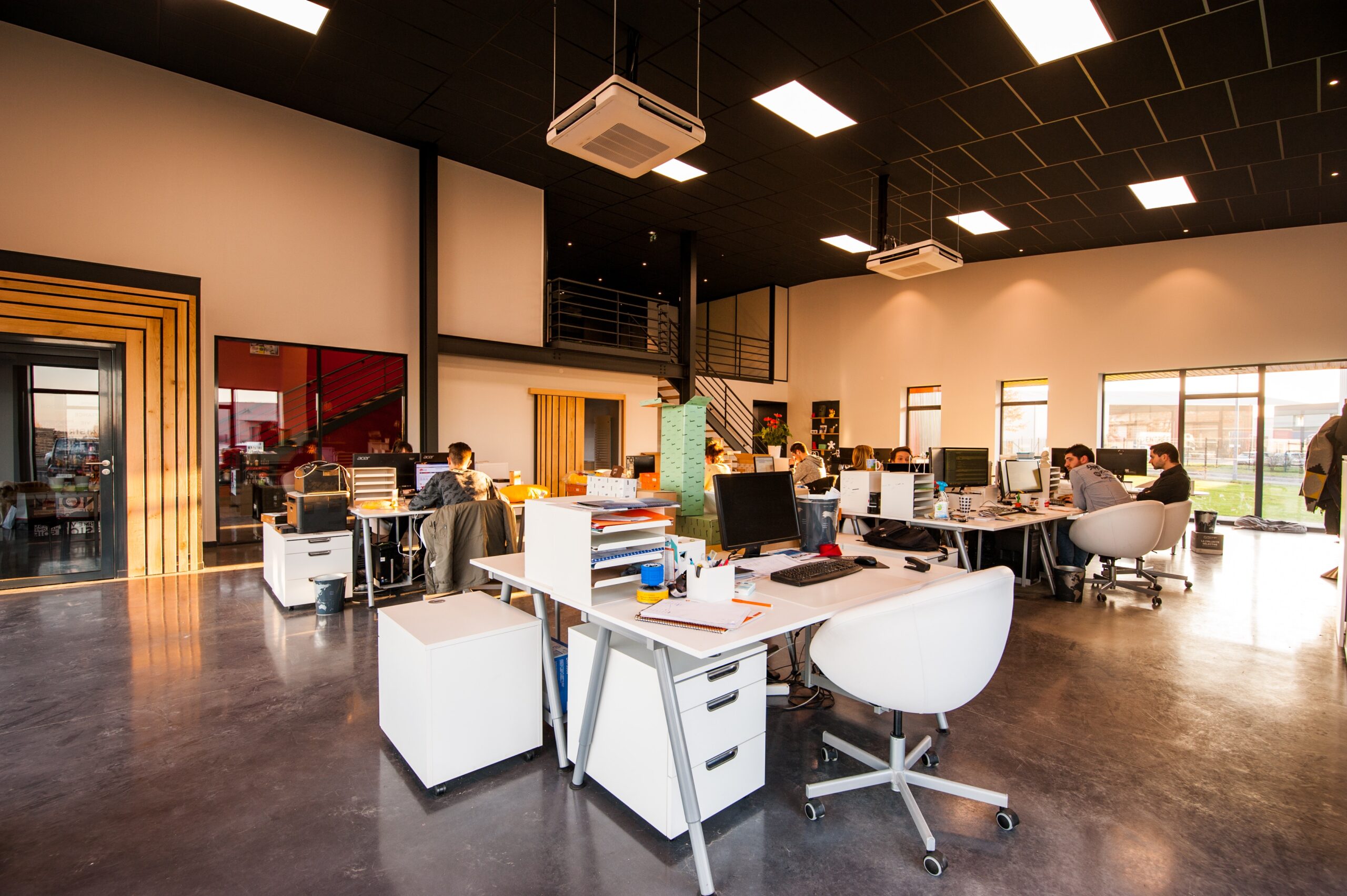
Photo by Cadeau Maestro from Pexels
c) the office of the production team
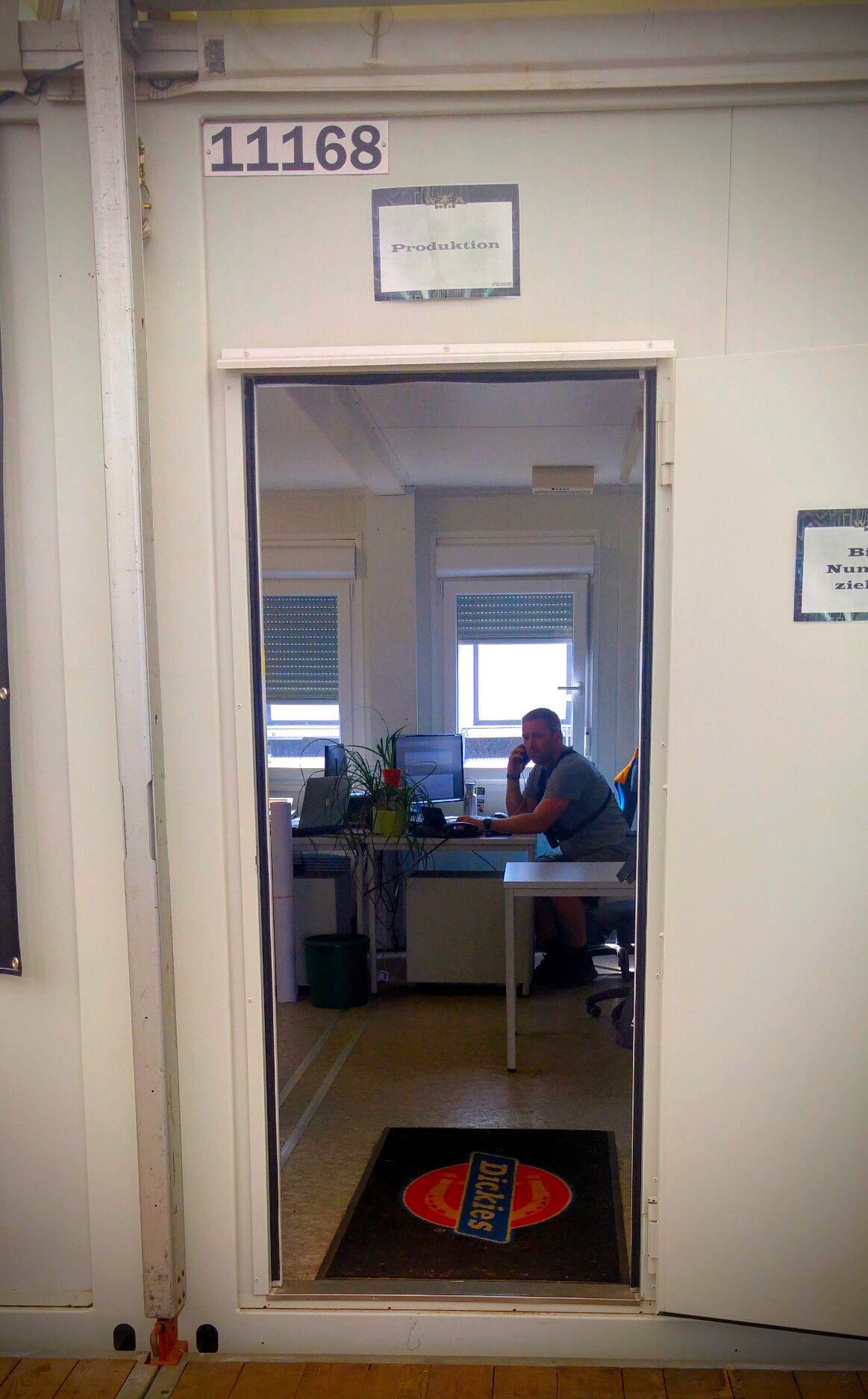
Photo by Holger Jan Schmidt
Runner
Person(s) provided by the venue or promoter of an event to assist the artist(s) and/or their crew with local transportation, running errands and so on.” (from https://concertsavvy.com/music-industry-slang/)
Scalper
A person who resells tickets for a large profit. The practice of scalping is often considered unfair and is even illegal in some countries (e.g., you are only allowed to sell the ticket for the price that you paid when purchasing it). Scalpers resell tickets online on various platforms, but they are also known to appear near the box office or entrance of an event, trying to resell tickets to people waiting in line.
Security
“Individual(s) responsible for the well-being and safety of others. Some artists have their own responsible for their personal security while on tour. Most security seen at venues is part of local events management.” (from https://concertsavvy.com/music-industry-slang/)
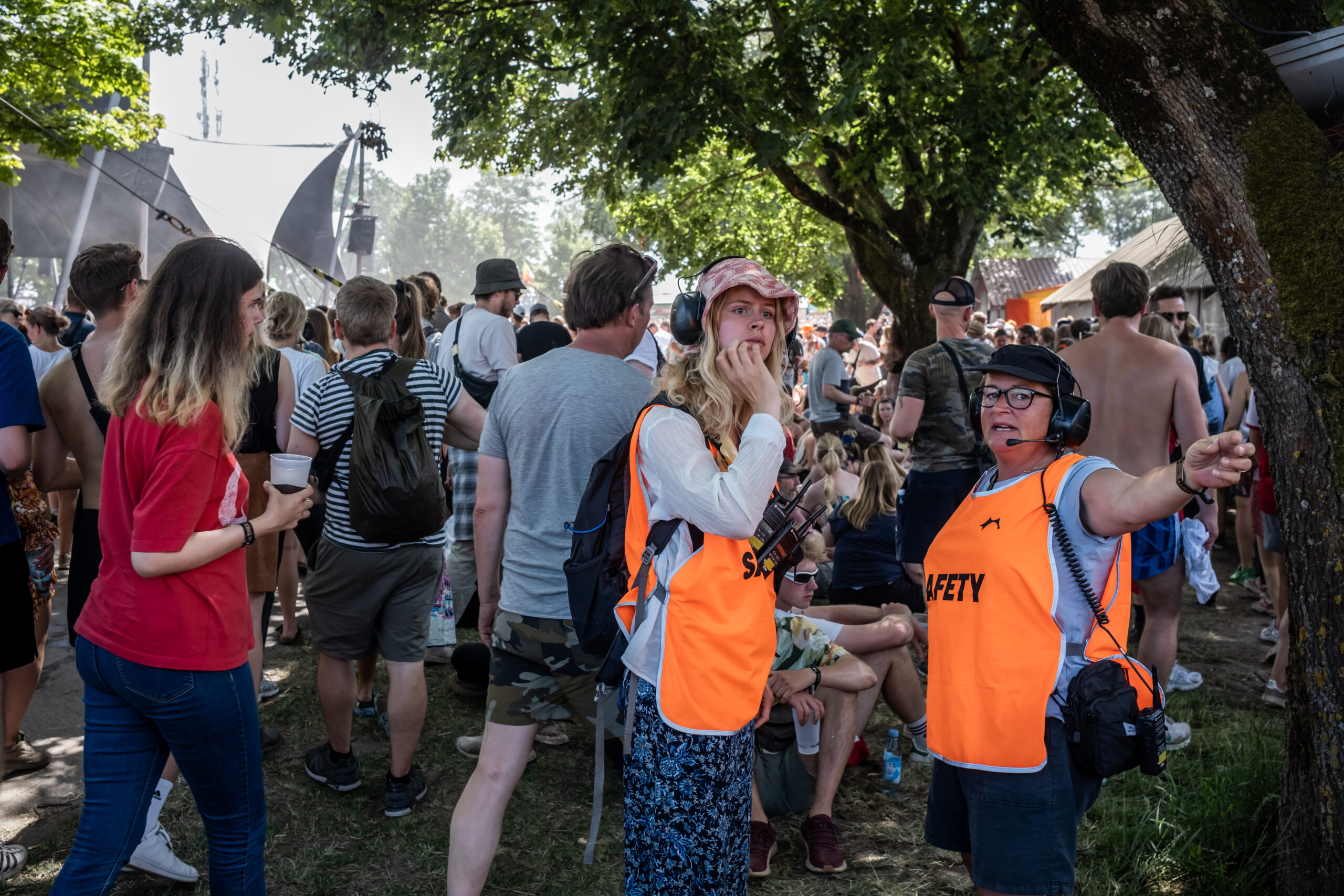
Photo by Kim Matthäi Leland
Set up
See "Get in".
Site
The festival area, i.e. the area where the event takes place, the space in front of and behind the stages, food stalls, exhibition areas and construction sites. Camping grounds are sometimes considered to be part of the festival site, but not always, especially when the campsites are not directly connected to the performance areas.
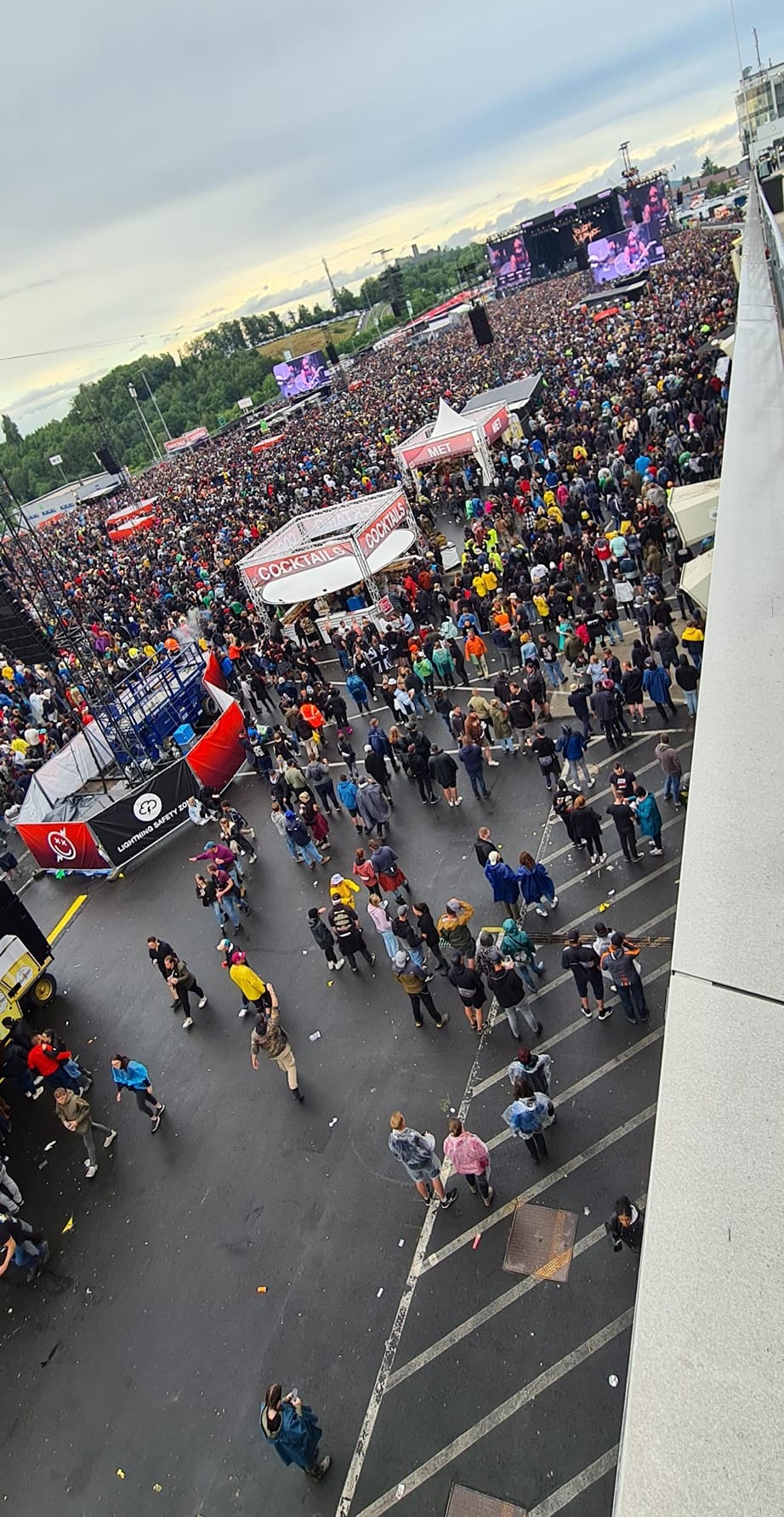
Photo by Holger Jan Schmidt
Site Crew / Site Works
Everything regarding the set-up of the area (fences, infrastructure etc.).
Social Innovation
Social innovation refers to the design and implementation of new solutions that imply conceptual, process, product, or organizational change, which ultimately aim to improve the welfare and wellbeing of communities.

Photo by Rodnae Productions from Pexels
Sound Check
“Process of checking the sound equipment prior to a show to ensure all connections and inputs are correct and sound levels are appropriate. Sometimes done by the full band or part of the band, or by others in charge of setting up the equipment.” (from https://concertsavvy.com/music-industry-slang/) This usually happens long before regular festival goers are allowed to enter the site.
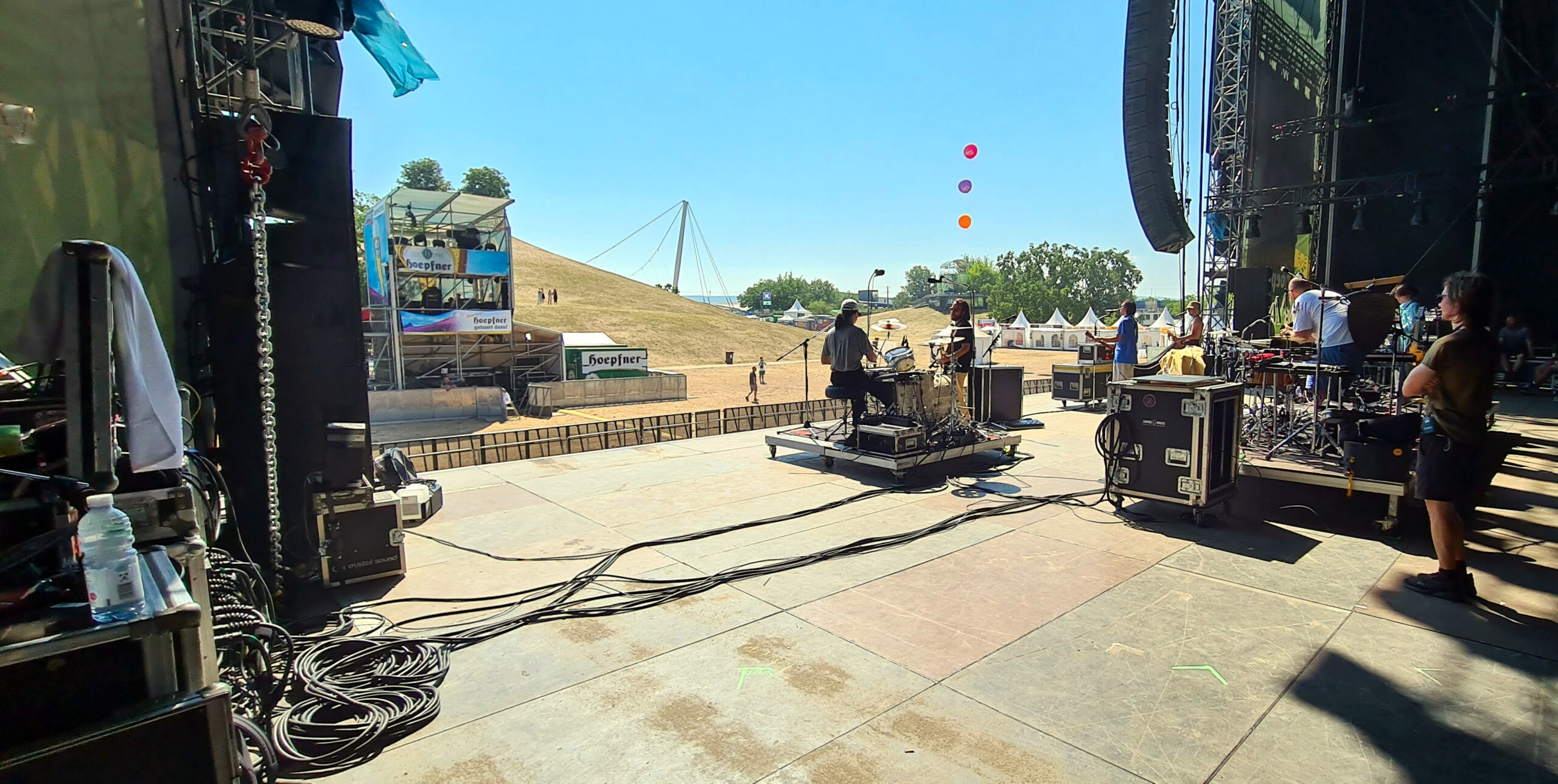
Photo by Holger Jan Schmidt
Stage Manager
An individual who organizes and supervises what happens on a specific stage. They ensure that the different performances stay on schedule.
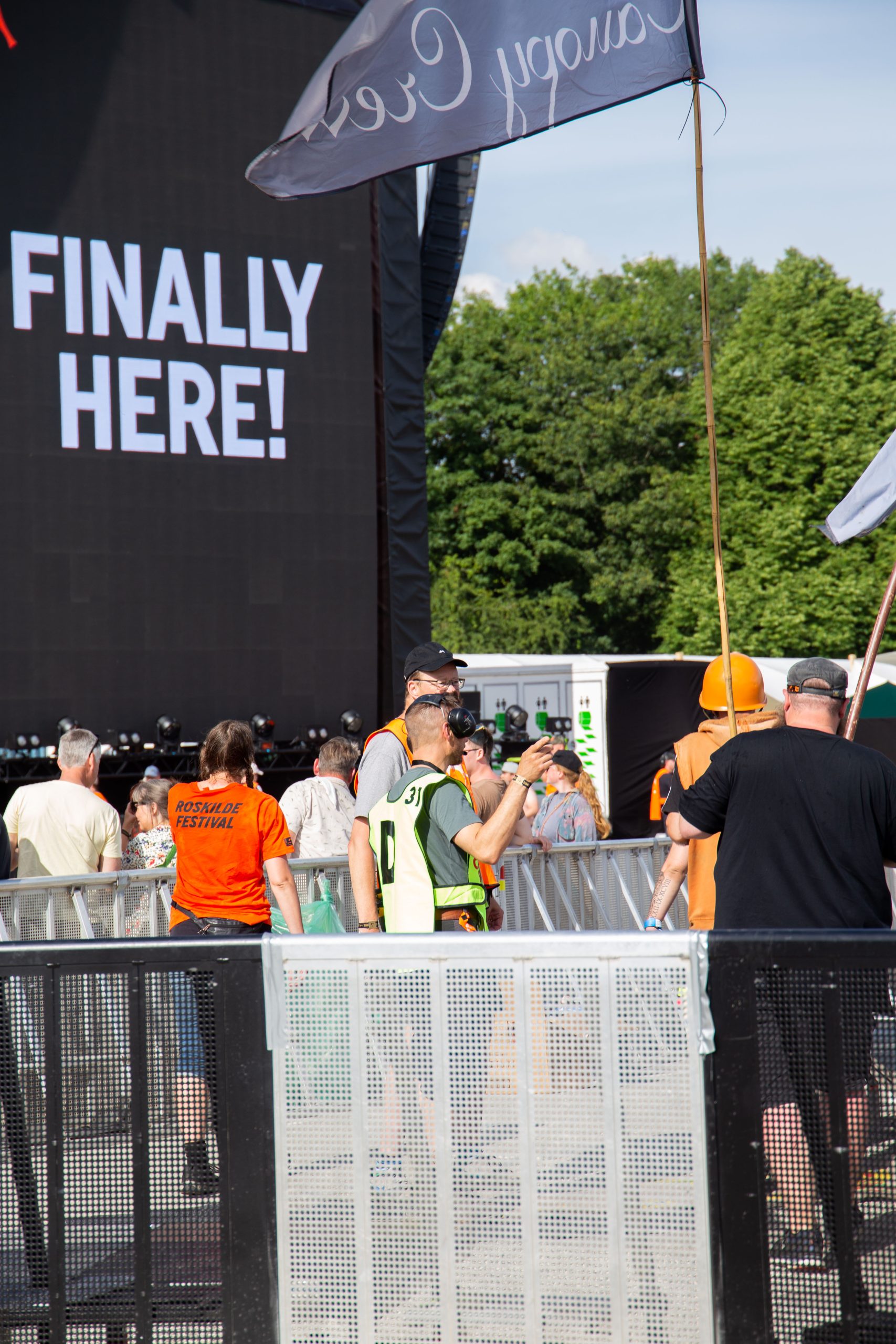
Photo by Noemi Kapusy
Tech/Technician
Crew members that deal with technological equipment. This might mean people who are dedicated to a specific type of equipment (e.g., guitar tech, drum tech) or the entirety of the equipment; people who operate the mixing console; people who handle technological equipment on stage like microphones; etc.
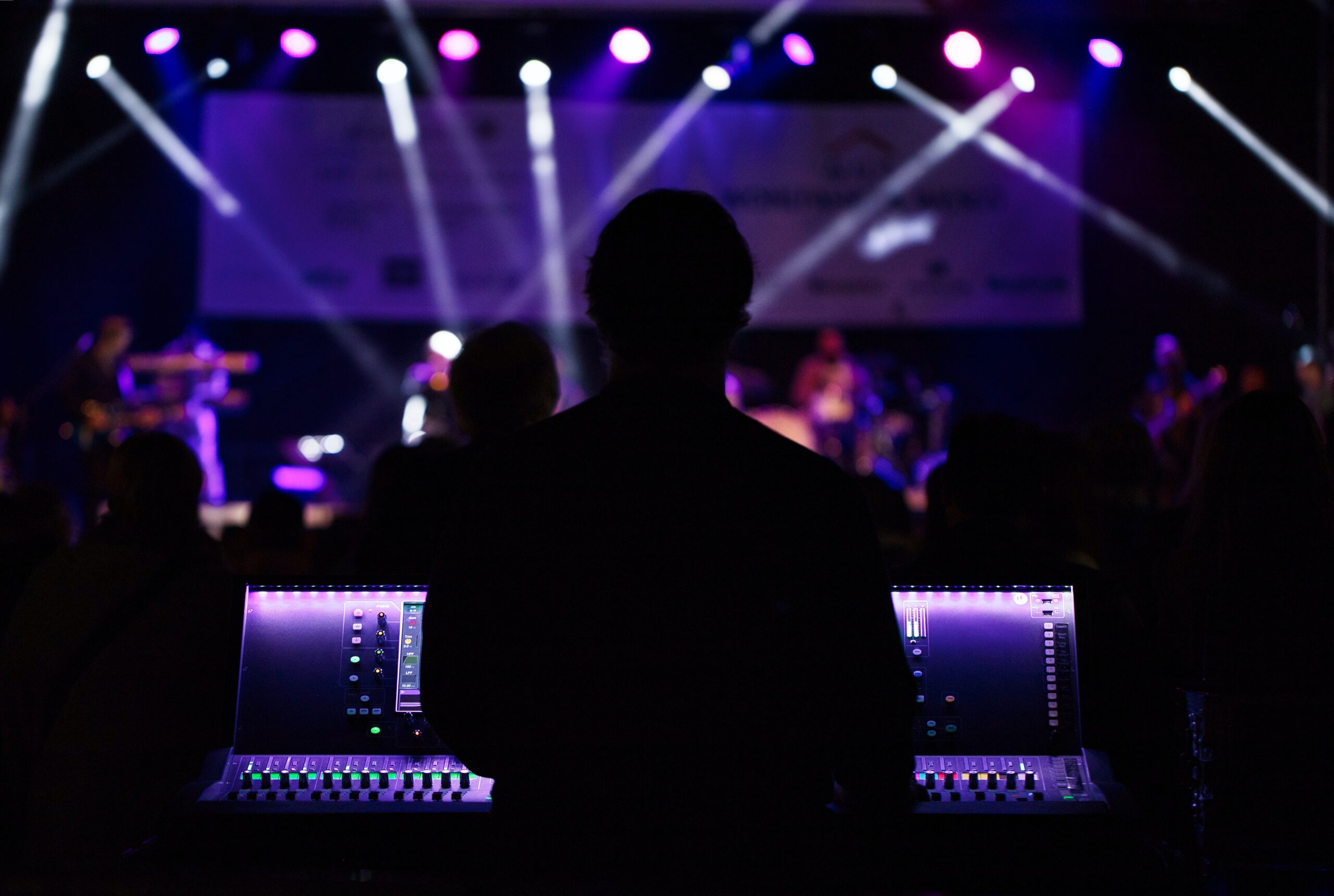
Photo by Marc Schulte from Pexels
Timetable
See "Lineup".
VIP
Abbreviation for "very important person". The exact meaning can vary widely across venues and events. Usually, VIPs don't have to pay for their entrance to an event, although the status can sometimes be bought. VIP can refer to people who need special attention, like artists. It can also mean special guests that the festival invited, e.g., colleagues from the industry, or prominent people that don't perform at the event. Sometimes, there is an extra area within the backstage areas for VIPs that requires a special wristband to enter.
In some cases, it can also mean fans that have earned special access, for example meet and greet participants and radio prize winners.
In some cases, it can also mean fans that have earned special access, for example meet and greet participants and radio prize winners.
Volunteers/Festival Volunteers
The Center for Volunteering defines Volunteering as:
"an activity or a set of activities which take place through a non-profit or a community organization, with no financial payment for the work done by the volunteer. The volunteering experience might be portrayed as a set of learning opportunities and personal or professional development for the volunteer, having as aim to be of benefit to the community. The volunteer involved with the activities might be a professional in the field offering the expertise and aiming at supporting the individuals and impacting the communities’ development, or might be ones involved with activities with no link to their profession, but driven by personal motivation and willingness to help." (see https://pjp-eu.coe.int/en/web/youth-partnership/glossary)
There are volunteers at every festival as well: people who work at a festival without pay or in exchange for free entrance to the festival.
In some countries (e.g., Germany) commercial companies are not allowed to work with volunteers. They have to pay at least minimum wage to all workers. However, non-profit/charitable organizations are allowed to work with volunteers.
Roskilde Festival is known to have the support of 30,000 volunteers each edition. Find out more here:
https://www.roskilde-festival.dk/en/sustainability/social-sustainability/
"an activity or a set of activities which take place through a non-profit or a community organization, with no financial payment for the work done by the volunteer. The volunteering experience might be portrayed as a set of learning opportunities and personal or professional development for the volunteer, having as aim to be of benefit to the community. The volunteer involved with the activities might be a professional in the field offering the expertise and aiming at supporting the individuals and impacting the communities’ development, or might be ones involved with activities with no link to their profession, but driven by personal motivation and willingness to help." (see https://pjp-eu.coe.int/en/web/youth-partnership/glossary)
There are volunteers at every festival as well: people who work at a festival without pay or in exchange for free entrance to the festival.
In some countries (e.g., Germany) commercial companies are not allowed to work with volunteers. They have to pay at least minimum wage to all workers. However, non-profit/charitable organizations are allowed to work with volunteers.
Roskilde Festival is known to have the support of 30,000 volunteers each edition. Find out more here:
https://www.roskilde-festival.dk/en/sustainability/social-sustainability/

Photo by Liza Summer from Liza Summer
Wristband
See "Pass/Pass System".
Youth work
Youth work is an expression summarizing activities with and for young people of a social, cultural, educational or political nature. The main objective of youth work is to provide opportunities for young people to shape their own futures.
Increasingly, youth work activities also include sports and services for young people. Youth work belongs to the domain of 'out-of-school' education, most commonly referred to as either non-formal or informal learning. The general aims of youth work are the integration and inclusion of young people in society. It may also aim towards the personal and social emancipation of young people from dependency and exploitation. Youth work belongs both to the social welfare and to the educational systems.
A useful resource is “Essentials” on Youth Partnership by the Council of Europe. Essentials on Youth Work, Youth Policy and Youth Research may be found in several languages on their website:
https://pjp-eu.coe.int/en/web/youth-partnership/essentials
Increasingly, youth work activities also include sports and services for young people. Youth work belongs to the domain of 'out-of-school' education, most commonly referred to as either non-formal or informal learning. The general aims of youth work are the integration and inclusion of young people in society. It may also aim towards the personal and social emancipation of young people from dependency and exploitation. Youth work belongs both to the social welfare and to the educational systems.
A useful resource is “Essentials” on Youth Partnership by the Council of Europe. Essentials on Youth Work, Youth Policy and Youth Research may be found in several languages on their website:
https://pjp-eu.coe.int/en/web/youth-partnership/essentials
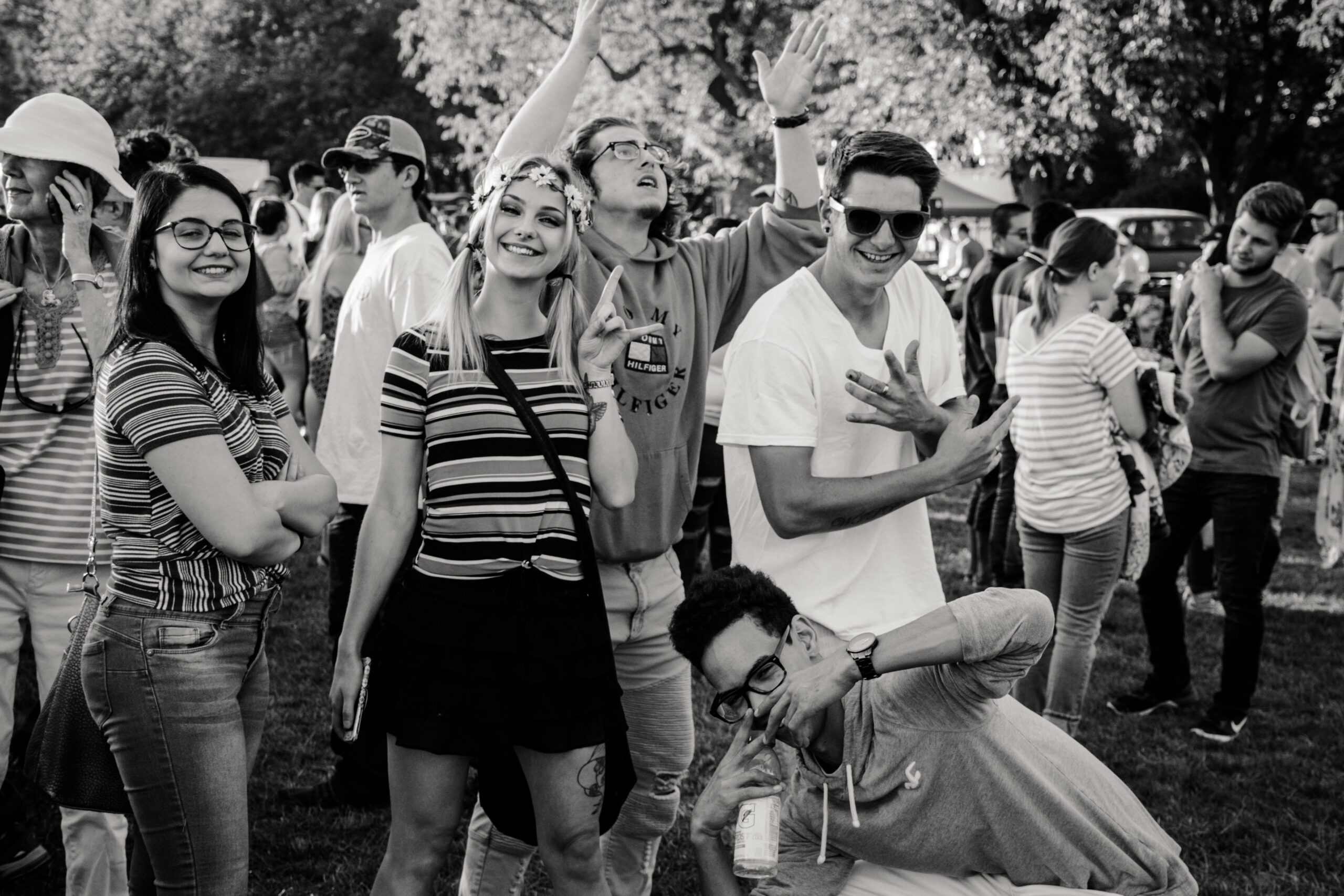
Photo by Brett Sayles from Pexels

This project has been funded with support from the European Commission. The author is solely responsible for this publication (communication) and the Commission accepts no responsibility for any use may be made of the information contained therein. In compliance of the new GDPR framework, please note that the Partnership will only process your personal data in the sole interest and purpose of the project and without any prejudice to your rights.
